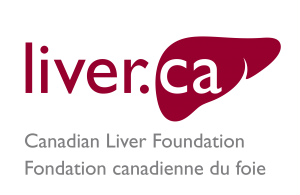Researchers

You can help bring liver research to life.
How does a liver transplant affect a child’s development? Is there a way to make hepatitis C testing easier and more convenient? How can liver cancer’s defences be dismantled?
All research begins with a question or a problem that needs to be solved. The answers rarely come quickly; they involve incremental steps over many years and even decades. Researchers build upon what others have learned until the answers emerge.
The Canadian Liver Foundation understands this and is proud to be able to support Canada’s top liver experts as well as promising new investigators and trainees who will carry on this country’s research legacy. Together, we are answering questions; together, we are bringing liver research to life.
Research Grant Competition
The Canadian Liver Foundation is proud to support researchers like you across Canada; scientists who have made liver research a priority in their labs and clinics. In order to support new advances and breakthroughs, the CLF funds the research of senior researchers, new investigators, and medical students through our research grant programs and partnership projects. We currently offer three categories of grants:
- Operating Grants provide funding of up to $60,000 per year for a maximum of two years to hepatobiliary research investigators to pursue major research projects. As the CLF’s most senior award, it is offered to investigators with primary interest in hepatobiliary research who hold academic appointments in Canadian universities or affiliated institutions. Both clinical investigators and basic scientists will be considered.
- Graduate Studentship grants provide funding for a maximum of two years at $20,000 per year. These awards are intended for scientists-in-training who are working towards obtaining their Masters or Ph.D. in hepatobiliary research.
- Summer Studentship grants provide funding of $4,000 to undergraduate students to allow them to pursue liver-related research projects under the guidance of leading liver researchers.
Through its research grants program, the CLF has supported the work of Canada’s leading researchers and scientists. The CLF is proud to have played an indispensable role in several important scientific breakthroughs including the discovery of genes responsible for Wilson’s Disease and hemochromatosis as well as various new treatments for hepatitis C and other forms of liver disease.
2024 Research Grant Competition
Please read this letter for an update on the 2024 Research Grant Competition.
Please check back to this page or follow us on social media for future announcements.
Additional Research Grant Opportunities
The Canadian Liver Foundation is proud to provide funding to support the incredible work of the Canadian liver research community and deliver on our mission of bringing liver research to life. In addition to the CLF Research Grant Program, below are liver research grant opportunities which are available through other institutions and may help to further expand our collective understanding of liver disease, while helping to improve the lives of Canadians living with liver disease. For more information on the grant programs below, please contact the program administrator directly or click on the link provided.
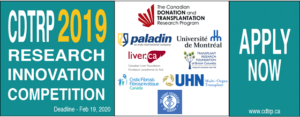
Since 2012, the Canadian Donation and Transplantation Research Program (CDTRP) has supported research and innovation that addresses barriers within the fields of donation and transplantation, with the ultimate goal of advancing long-term health outcomes and quality of life for Canadian transplant patients.
The Canadian Liver Foundation (CLF) is pleased to announce a new research grant opportunity for the Canadian liver research community. While the grant funded by the CLF is specifically designated for liver donation/transplantation research, there are up to 10 other non-organ-specific grants that are available for applications which align with one of the 5 Themes of the CDTRP, which are:
- Create a culture of donation
- Inform universal practices for donation
- Engineer and allocate a better graft
- Tailor an optimal immune system for each patient
- Restore long-term health.
The deadline for applications to the CDTRP Research Innovation Grant Competition is February 19, 2020. For more information about the application process, including eligibility criteria, please visit www.cdtrp.ca/2019-cdtrp-research-grant
Program Director: Dr. Leslie Lilly
Program Contact: Danielle Arends
Telephone: (416) 340-4800 x 6821
E-mail: TxHepatologyFellowship@uhn.ca
Key Dates:
Application Deadline: April of the year prior to the Fellowship start
Start Date: July 1st each year
Length of Program: 1-2 years
More information can be found here. (Please note: this is an external site, information available is in English.)
CLF Funded Projects
Continuing research is critically important in the fight against liver disease.
Through research, we are able to improve prevention methods, screening, diagnostics and treatment in order to reduce the incidence and impact of liver disease. More research leads to more medical breakthroughs, better treatments with fewer negative side effects, and more cures. The Canadian Liver Foundation is proud to support the work of Canadian researchers who share our mission of bringing liver research to life.
Meet our 2020 research grant recipients
Operating Grants
Unrestricted Hepatobiliary Research
Investigating links between intestinal microbiome and visceral adipose tissue, adipokines and liver immune cells in non-alcoholic fatty liver disease.
 Dr. Johane Allard
Dr. Johane Allard
University of Toronto
Co-applicants: Dr. Timothy Jackson, Dr. Allan Okrainec, Dr. Herbert Gaisano, Dr. Dana Philpott, Dr. Wendy Lou, & Dr. Sandra Fischer.
Non-alcoholic fatty liver disease (NAFLD) can progress to liver inflammation (NASH) and scarring (fibrosis) leading to cirrhosis and transplantation. Older age, diabetes and severe obesity can affect NAFLD progression. Gut bacteria composition, genes and products may also contribute by inducing a leaky gut. This can affect the amount and quality of abdominal fat, influencing the production of inflammatory mediators (adipokines) that can activate liver immune cells and increase NAFLD severity. But some gut bacteria and products may be protective, like Faecalibacterium prausnitzii (FP) and butyrate.
Dr. Allard and her team are planning to determine if FP (stools) and butyrate (stools/blood) are associated with reduced liver immune cells, better abdominal fat quality and lower adipokines in relation to NAFLD severity. 223 obese patients who underwent bariatric surgery with liver and abdominal fat biopsies and 52 who completed 1-year follow-up with liver biopsy will be studied. The results will complement their mice study investigating this link.
“Non-alcoholic fatty liver disease is the most common cause of chronic liver disease in North America. With the help of funding from the CLF and its donors, we hope to better understand how the gut bacteria contributes to this disease.”
Designated Liver Cancer Research Grant in Canada
Guided Delivery of Lipoprotein-Like Nanoparticles to Safely Treat Hepatocellular Carcinoma
 Dr. Mamatha Bhat
Dr. Mamatha Bhat
University Health Network
Co-applicant: Dr. Gang Zheng
Patients with cirrhosis who develop liver cancer often cannot tolerate therapy due to inadequate liver function. Dr. Bhat and her team hypothesize that PorphyHDL, a carrier that behaves like a lipoprotein (fat transporter), will limit side effects in patients with chronic liver disease who develop liver cancer. This therapeutic vehicle can also be followed by fluorescence imaging to titrate dosing for tolerability and optimize delivery to cancer cells.
The specific aims of this study are to evaluate whether PorphyHDL could be used as a vehicle to deliver sorafenib (liver cancer treatment) directly into liver cancer cells in a mouse model of cirrhosis, without the systemic side effects, and to assess whether PorphyHDL could be used to deliver genetic inhibitors directly into liver cancers.
Dr. Bhat and her team will be testing PorphyHDL as a delivery tool of Non-Alcoholic Fatty Liver Disease (NAFLD) cirrhosis that develops liver cancer. Dr. Bhat will also evaluate a genetic interference approach, which would be safe to use even when certain drug metabolizing enzymes do not function normally. This study will demonstrate for the first time that it is possible to safely use a natural fat transporter-like carrier, PorphyHDL, for image-guided delivery of cargo to treat liver cancer even with cirrhosis.
“Liver cancer is affecting a rising number of Canadians and is highly fatal. Thanks to the funding and support we received from the CLF, we are pursuing research to investigate new treatment methods to conquer fatty liver disease and liver cancer.”
Designated Hepatitis B Research Grant in Canada
The Smc5/6 complex: A powerful and natural cure for hepatitis B virus infection
 Dr. Damien D’Amours
Dr. Damien D’Amours
University of Ottawa
Hepatitis B virus is a major cause for liver dysfunction and infects more than 350 million individuals worldwide. Our body encodes a natural cure that protects us from viral hepatitis: the Smc5/6 complex. Unfortunately, the hepatitis B has evolved a strategy to short-circuit this natural protection mechanism.
The long-term goal of Dr. D’Amour’s research program is to devise a drug capable of re-activating the natural capacity of cells to defend themselves against hepatitis B infection. To achieve this goal, Dr. D’Amours and his team will want to identify small molecule inhibitors capable of disrupting the interaction between hepatitis B proteins and the Smc5/6 complex, thus unleashing the anti-viral activity of Smc5/6 from the negative influence of hepatitis B.
Dr. D’Amours will aim to identify how hepatitis B factors bind to the Smc5/6 complex and define how this interaction might be disrupted. Achieving these goals will provide crucial insights necessary to identify a cure for liver dysfunction in hepatitis B-infected individuals.
“With more than 250 million people suffering from hepatitis B infection worldwide, virus-induced liver dysfunction remains a major health challenge in modern medicine. The financial support provided by the CLF will allow us to investigate how our natural anti-viral defenses can be used to cure hepatitis B and improve the lives of millions of patients.”
Graduate Studentships
Designated Hepatobiliary Research Grant in Alberta
The effect of a 12-week home-based exercise program on muscle-mass, strength and quality of life in children with sarcopenia who have undergone liver transplantation
 Ms. Amber Hager
Ms. Amber Hager
University of Alberta
Supervisor: Dr. Diana Mager
Sarcopenia is a condition that is associated with low muscle mass, low muscle strength and impaired physical performance. Sarcopenia is very common in children and adults with liver disease before and after liver transplantation. In children, sarcopenia can lead to difficulties in participating in daily activities of life including climbing of stairs which can impact the child’s ability to participate in routine regular physical activity. All of this can severely impact the health-related quality of life for a child living with liver disease.
Ms. Hager will be developing a home-based progressive resistance exercise program using resistance bands which can be done in the home by children with sarcopenia who have had a liver transplant. Ms. Hager will aim to study whether this home-based exercise program results in improvements in muscle mass, muscle strength and overall ability to participate in routine physical activity resulting in significant improvements in health-related quality of life.
“Liver transplantation has many impacts on physical performance and participation in activities of daily life in children. With the help of CLF funding and its donors, we hope to develop important rehabilitation strategies to improve strength, physical ability and quality of life in children who have undergone liver transplantation.”
Designated Hepatitis B Research Grant in Canada
 Burden of chronic hepatitis B in Albertan women of childbearing age.
Burden of chronic hepatitis B in Albertan women of childbearing age.
Ms. Golasa Samadi Kochaksaraei
University of Calgary
Supervisor: Dr. Carla S. Coffin
Mother-to-child is the most common transmission of the hepatitis B. The use of infant immunoprophylaxis is ~90% effective in reducing the risk of vertical transmission. However, Immunoprophylaxis failure can occur if there is high maternal viremia. Thus, it is generally recommending that pregnant women with chronic hepatitis are to receive a chronic hepatitis B medication (tenofovir disoproxil fumarate or TDF).
Since there is limited data on the effect of TDF use in pregnancy on maternal long-term outcomes, Ms. Kochaksaraei, alongside her supervisor, will determine outcomes of TDF use in pregnancy in a large multiethnic group of patients. They will be identifying the epidemiologic characteristics of chronic hepatitis B in Albertan women of childbearing age over a 10-year period. This study will inform the public health policy to achieve the World Health Organizations goal of viral hepatitis elimination by 2030.
“Thanks to the funding and support from the CLF, our study will advance understanding of hepatitis B infection epidemiology in a multi-ethnic population of women of childbearing age.”
Designated Hepatitis B Research Grant in Canada
Development of hepatitis B virus (HBV) serum RNA biomarker assay as a surrogate measure of intrahepatic HBV replication.
 Ms. Alicia Vachon
Ms. Alicia Vachon
University of Manitoba
Supervisor: Dr. Carla Osiowy
Chronic hepatitis B affects over 250 million people worldwide and accounts for 1 million deaths annually. With chronic infection, there is a heightened risk for developing liver cirrhosis and hepatocellular carcinoma.
Monitoring of hepatitis B levels in chronic patients following treatment requires a liver biopsy sample and is not standardized. New biomarkers that can be collected less invasively are needed. Ms. Vachon, alongside her supervisor, aims to 1) fully characterize, by size and sequence, the hepatitis B RNA found in serum, 2) develop an analysis to detect hepatitis B RNA in serum as a substitute biomarker of hepatitis B replication, and 3) to validate the analysis in a clinical trial evaluating a new treatment regimen and a comparison trial.
Ms. Vachon hypothesize that the develop method will allow for the quantification of a surrogate biomarker of hepatitis B replication that is highly associated with a clinical outcomes during treatment of chronic hepatitis b and the characterization of the serum-based hepatitis B RNA transcriptome.
“Thanks to the funding provided by the CLF and its donors, I am working on characterizing serum HBV RNA, a novel biomarker of hepatitis B virus, and developing a standardized assay to detect it in patient samples in order to improve patient management of chronic hepatitis B.”
Summer Studentships
Trisha Nagpal Memorial Summer Studentship Award – Designated Hepatobiliary Research Grant in Canada
The impact of pre-liver transplant hepatic encephalopathy on post-transplant clinical consequences.
 Ms. Karianne Desmarais
Ms. Karianne Desmarais
Université de Montréal
Supervisor: Dr. Christopher Rose
Hepatic Encephalopathy (HE), a complex neuropsychiatric syndrome, is a major complication of chronic liver disease (cirrhosis). The inability of the liver to metabolize endogenous toxins results in the release of circulating neurotoxins that affect the brain. Thus, minimal HE manifests itself in memory, coordination, motor difficulties, and mood challenges. HE became episodic when the symptoms, timely manner, are more obvious and severe, such as confusion, lethargy, major disorientation, asterixis and coma. Several recent studies have shown that episodes of severe HE can cause permanent brain damage and memory and learning deficits remain despite episode’s resolution.
Ms. Desmarais, alongside her supervisor, will aim to determine whether the presence (or severity) of pre-liver transplant HE is predictive of the post-transplant clinical outcome (mortality and number of readmissions). The secondary objective focuses on identifying the causing factors associated with a negative prognosis. To do so, they will retrospectively study the cohort of cirrhotic patients who underwent LT between 2010 and 2020 in their university hospital.
“Thanks to CLF and their funding, I was able to acquire new skills by integrating a research team full-time last summer. This allowed me to explore the other side of patient care as a former liver transplant ICU nurse, in a setting that was quite new to me. As a future doctor, I recognize the importance of evidence-based medicine and having the opportunity to experience being in a research team will certainly be an asset for my future.”
Designated Liver Cancer Research Grant in Canada
The role of interleukin-6 trans-signaling on fibrosis in NASH-associated liver cancer
 Ms. Stephanie Zhou
Ms. Stephanie Zhou
McGill University
Supervisor: Dr. Jennifer Estall
Liver cancer is one of few cancers whose incidence is rising in Canada. It is highly fatal and has few treatment options. One poorly understood risk factor for liver cancer is obesity and metabolic fatty liver disease. Since these conditions are reaching epidemic proportions, we can expect the prevalence of liver cancer to continue to rise.
Stephanie worked alongside Dr. Jennifer Estall at McGill University to find new ways to treat liver cancer. Specifically, the team was working on trying to identify molecular pathways in liver cells that influence tumor development and growth, particularly in obesity. With this work, they aim to better understand the links between obesity, liver fibrosis, and tumor growth and possibly find new ways to treat this highly fatal disease.
Using mice made obese by diets high in sugar and fat, they were able to investigate how activation of an inflammatory pathway (interleukin-6, IL-6) affects buildup of scar tissue in the liver and how this leads to tumor formation. With this work, they aim to better understand the links between obesity, liver fibrosis, and tumor growth and possibly find new ways to treat this highly fatal disease.
“As a full-time student, the funding I received for this project from the CLF was crucial in allowing me to concentrate on this project during my summer, especially with the ongoing pandemic. I have gained valuable skills in the lab, such as learning research techniques including RNA isolation, protein isolations, conducting Western Blots and qPCRs. Thank you again to the Canadian Liver Foundation for providing me with this opportunity.”
Raj Bhargava Memorial Summer Studentship – Designated Radiology of Liver Disease Research Grant in Alberta
Liver radiology therapies for hepatocellular carcinoma – a co-developed video-based educational intervention to improve patient knowledge, attitudes and preparedness.
 Mr. Ajaypaul Sidhu
Mr. Ajaypaul Sidhu
University of Alberta
Supervisor: Dr. Puneeta Tandon
With the help of CLF funding, psychology major Ajaypaul Sidhu created animated videos to improve patient knowledge and treatments of Hepatocellular carcinoma (HCC), the sixth most common cancer and the second leading cause of cancer mortality worldwide.
Current treatments for HCC are led by radiology and include radiofrequency ablation, ethanol ablation, transarterial chemoembolization, and transarterial radioembolization. Since patients with HCC in Alberta do not have access to evidence-based, patient-oriented information about these procedures, their benefits, and their complications, Mr. Sidhu’s study aimed to assess the value of a patient-oriented animated teaching video about HCC radiology procedures on patient knowledge, attitudes, and overall preparedness.
Mr. Sidhu hopes his videos will improve overall patient knowledge of HCC treatments and provide an acceptable, standardized teaching modality to enhance practitioner-patient engagement that will benefit patients in Canada and elsewhere.
“With the help of the Canadian Liver Foundation funding, we were able to bring these new digital modalities to life in an attempt to improve cirrhosis education for patients. This was vital for my research, as I was able to work full time in the summer focusing fully on the project.”
Designated Liver Transplant Research Grant in Canada
Improving prediction of patient outcomes before, during and after receiving a liver transplant through analysis of muscle mass.
 Dr. Aldo Montano-Loza
Dr. Aldo Montano-Loza
University of Alberta
Co-Applicants: Dr. Vera Mazurak, Dr. Maryam Ebadi
Patients with cirrhosis often experience muscle loss. This and other muscle abnormalities are associated with a higher risk of problems like infections, longer recovery time after surgery and higher probability of death before and after receiving a liver transplant.
Dr. Montano-Loza and his team are aiming to understand the relationship between muscle abnormalities and the potential adverse outcomes before, during and after liver transplantation. Muscle amount and condition will be assessed using computed tomography in patients with cirrhosis listed for liver transplantation.
This research will help pave the way for better individualized assessment of each patient and ultimately, help find customized treatment strategies that could improve transplant success rates and the patients’ quality of life.
“Liver transplants are lifesaving procedures, but they still come with many risks and complications,” says Dr. Montano-Loza. “With the help of funding from the CLF and its donors, we hope to make more liver transplants successful in both the short and long-term.”
Groundbreaking liver research, much like the project underway by Dr. Aldo Montano-Loza and his team, is made possible through funding provided by kind donors looking to help advance liver research and provide hope for the millions of Canadians affected by liver disease.
Designated Liver Cancer Research Grant in Canada
 Exploring the Role of a Well-Known Breast Cancer Gene (BRCA1) in Relation to Fatty Liver Disease and Liver Cancer.
Exploring the Role of a Well-Known Breast Cancer Gene (BRCA1) in Relation to Fatty Liver Disease and Liver Cancer.
Dr. Minna Woo
Toronto General Hospital Research Institute
Co-Applicant: Dr. Yoo Jin Park
Liver cancer currently represents the third leading cause of cancer-related deaths worldwide. Although obesity has been identified as a risk factor for liver cancer, the exact mechanisms underlying liver cancer still remain unclear.
Recent research has shown that well-known breast cancer susceptibility gene 1 (BRCA1) may have an impact in the body’s metabolism. Dr. Woo and her team have compelling preliminary information that suggests BRCA1 may play a critical role in the development of fatty liver and liver cancer.
Dr. Woo’s promising research project will clarify their understanding of how fatty liver can worsen and potentially lead to liver cancer. In turn, this will help them find new treatments for this devastating disease with no cure to date.
“An emerging leading cause of liver cancer is fatty liver disease. Thanks to the funding and support we received from the CLF, we are pursuing research to investigate new treatment methods to conquer fatty liver disease and liver cancer.”
Donations received from caring Canadians and community-minded companies help scientists like Dr. Mina Woo potentially discover new treatments for the benefit of the millions of Canadians affected by liver disease.
Raj Bhargava Memorial Summer Studentship
 Developing Pivotal New Features For A Smartphone App Used To Analyze MRI Images Of Metabolic Liver Diseases.
Developing Pivotal New Features For A Smartphone App Used To Analyze MRI Images Of Metabolic Liver Diseases.
Noah Gergel
University of Alberta
Supervisor: Dr. Ravi Bhargava
In 2018, with the help of funding received from the CLF, computer engineering student Kyle Hennig designed a smartphone app to help interpret MRI results of metabolic liver diseases; as a result, a wide range of specialists like radiologists, pediatricians, gastroenterologists, surgeons and neurologists were more easily able to diagnose metabolic liver diseases in children.
This year, computing science student Noah Gergel is working to expand and update this app by improving its accuracy, refining design elements to allow for easy use by non-expert physicians and incorporating recently published research and new diseases. Used worldwide, this app will continue to ensure that specialists are more likely to make a correct diagnosis, thus improving patient care.
“As a full-time student, the funding from the CLF proved to be invaluable in bringing my research project to life. It enabled me to work on the project full time over the summer so I could improve and build upon the app as much as possible. Thanks to the CLF, I can help ensure new and improved technology is available to liver specialists for better patient care.”
Funding young and ambitious students with a keen interest in liver science and technology helps create a brighter future for Canadians with liver disease. As demonstrated by both Noah and Kyle, donations received from kind-hearted Canadians are truly bringing liver research to life.
To make a donation in support of liver health research click here.
Raj Bhargava Memorial Summer Studentship
Building a smartphone app to analyze MRI images of metabolic liver diseases
 Kyle Hennig
Kyle Hennig
University of Alberta
Supervisor: Dr. Ravi Bhargava
Metabolic liver diseases, or, conditions in which abnormal chemical reactions in the body disrupt the metabolism, affect many children and youth with liver disease. For children in need of liver transplants, magnetic resonance imaging (MRI) is often required to screen for these disorders before they can be placed on the liver transplant list.
Kyle Hennig, a computer engineering student from the University of Alberta, recognized the need for a tool that can be used by multiple healthcare professionals to assess MRIs and the detailed analysis of accumulated substances in the brain.
Under the supervision of Dr. Ravi Bhargava, Kyle will work to design a smartphone application using an algorithm that will help to interpret MRI results. This work will enable a wide range of specialists like radiologists, pediatricians, gastroenterologists, surgeons and neurologists, to diagnose metabolic disorders much easier.
“The Canadian Liver Foundation gave us the opportunity to make knowledge of metabolic disorders affecting the liver and brain accessible to a larger audience than otherwise possible,” says Kyle.
Obtaining funding as a student can be difficult, but thanks to the generous support of our donors, the CLF Summer Studentship Program provides an opportunity for a limited number of well-motivated students with records of strong academic performance to participate in liver-related research. This can ultimately lead to the recognition and training of Canada’s next top liver research experts.
Operating Grants
Solving the mystery of biliary atresia with stem cells
Dr. Binita Kamath 
Hospital for Sick Children (Toronto)
Co-Applicants: Drs. Anand Ghanekar and Saul Karpen
Dr. Kamath and her collaborators believe that a defective gene found in the bile duct cilia (or, cell structures) is leading to liver inflammation, scarring and a severe childhood liver disease called biliary atresia with no known cause or cure yet.
Biliary atresia results when the bile duct that leads from the liver to the intestine becomes damaged and prevents bile from leaving the liver.
Dr. Kamath and her team will use novel technology to generate bile duct cells from stem cells created from patients’ blood in order to study how this gene mutation leads to the creation of defective bile duct cells.
“Biliary atresia is the most common cause of liver transplantation in children,” says Dr. Kamath “This funding from CLF is crucial to support the testing of a gene that disrupts cilia function as a potential cause of biliary atresia.”
With support from the Canadian Liver Foundation’s donors, this incredible research may discover, design and test new therapies in clinical trials, hopefully resulting in a cure.
Unrestricted Hepatobiliary Research
Disrupting liver cancer producing cells

Dr. Naglaa Shoukry
University of Montreal
Co-Applicant: Dr. Simon Turcotte
Liver cancer is a deadly and rapidly growing public health issue in Canada, with limited treatment options available for patients. Some of the risks of liver cancer include inflammation and scarring of the liver. Inflammation is caused in part by white blood cells which produce cytokines (proteins that send messages to the immune system at the site of damage or trauma).
Dr. Shoukry and her team have chosen to study a protein called IL-17; a well-known enhancer of inflammation and scarring that leads to liver cancer. The team will aim to determine which cells produce IL-17, when the cancer cells are signalled to enter into the liver, and how effective treatments can block cancer cells from entering.
“Funding from the Canadian Liver Foundation is helping my group investigate and understand previously understudied mechanisms by which patients with advanced liver disease develop liver cancer,” says Dr. Shoukry. “Currently, there are very few treatments for liver cancer. Our research will help us identify novel targets for limiting liver disease progression and preventing liver cancer”.
Donations of all kinds have helped lead to this promising opportunity that may guide the development of new therapies and thus, prevent the development of liver cancer.
Testing therapies on Canada’s most common liver disease
 Dr. John Ussher
Dr. John Ussher
University of Alberta
Non-alcoholic fatty liver disease (NAFLD) is the accumulation of fat in the liver without the influence of alcohol. Current estimates suggest that 1 in 5 Canadians have non-alcoholic fatty liver disease, leaving them susceptible to developing cirrhosis, liver cancer and liver failure. Current therapies are lacking in this growing epidemic.
Dr. Ussher and his team have recently discovered that a drug used to treat heart disease, ranolazine, may also reduce the severity of NAFLD. Ranolazine has shown promise in increasing sugar metabolism (how well your liver converts food into energy used by the body) and thus could reduce the impact of NAFLD.
This exciting new investigation will use disease models to confirm whether ranolazine directly reduces fatty liver by increasing liver sugar metabolism and could confirm whether ranolazine is a suitable treatment for NAFLD.
“Funding from the CLF and its donors is helping my lab to elucidate novel mechanisms by which energy metabolism is regulated in the liver, and whether modifying liver energy metabolism may represent an exciting strategy to improve and reverse the consequences of fatty liver disease,” says Dr. Ussher.
Designated Liver Cancer Research Grant in Ontario
Understanding the complex relationship between liver cancer and the immune system
 Dr. Mamatha Bhat
Dr. Mamatha Bhat
University of Toronto
(Toronto General & Western Hospital Foundation)
Co-Applicants: Drs. Daniel De Carvalho and Anand Ghanekar
Liver cancer is often diagnosed when it is too late to offer therapy that can cure the disease. Since liver cancer recurs in up to 20% of transplant cases, it is critical we find a way to earlier diagnose and treat this disease.
Research suggests that immune cells play a role in the development of hepatocellular carcinoma (HCC), the most common form of cancer that starts in the liver. In order to recognize what exactly that role is, Dr. Bhat’s research team will analyze the genetic makeup of two types of tumours—recurring cancers that evolve in an environment where the immune system is overwhelmed by tumours, and recurring cancers that appear after a cancer-removing surgery (called resection) where the immune system is not overwhelmed by tumours.
This unique opportunity to explore the relationship between liver cancer and the immune system will help to identify better therapies in order to ultimately cure liver cancer.
“As an early-career investigator, funding from the CLF helps to move forward my research in HCC,” says Dr. Bhat. “Over the years, I’ve studied HCC from various perspectives and using different tools, including epidemiologic, basic molecular biology and bioinformatics, and the project funded by the CLF brings together these different skill sets.”
To make a donation in support of liver health research click here
Designated Ontario Grant (sponsored by F. Pauline Spence)
Dr. Morgan Fullerton
University of Ottawa
Project Title: The regulation of cholesterol synthesis obesity-induced fatty liver.
Obesity has become a global epidemic and now affects millions of Canadians (costing almost 10 billion dollars annually). Obesity is the leading cause of numerous metabolic disorders and it is now the most common cause of fatty liver disease in Canada. Although responsible for making and processing fats and cholesterol, the liver can become overloaded with fats which is first step in fatty liver disease. It is known that cholesterol made in the liver can play an important role in the development of fatty liver, but Dr. Fullerton believes that the metabolic pathways that control the amount of cholesterol malfunction during obesity. This research proposal aims to better understand how obesity re-wires the liver to over-produce cholesterol in the hopes that we can one day prevent and correct obesity-related fatty liver disease.
Designated Liver Cancer Research Grant
Dr. Anand Ghanekar
University of Toronto
Toronto General & Western Hospital Foundation
Project Title: Role and regulation of dual specificity phosphatase 9 (DUSP9) in human hepatocellular carcinoma.
Hepatocellular carcinoma (HCC) is the most common liver cancer that starts in the liver, and is the 5th most common cancer in the world, and the 3rd leading cause of cancer-related death. Better knowledge about how HCC develops and progresses should lead to improve treatments. Dr. Ghanekar’s research has revealed that a molecule called dual specificity phosphatase 9 (DUSP9) is present at a high level in human HCC tumours. Molecules like DUSP9 are important in controlling cell growth in other cancers but have not been studied in HCC. The goal of this research is to understand the function of DUSP9 in liver cancer by studying liver cancer cells in dishes as well as in mice, and observe how their behaviours changes with modifications in DUSP9 levels and to identify the molecular mechanisms and proteins in liver cancer cells that control DUSP9 levels. The results of this study should improve our understanding of HCC and lead to opportunities for innovative treatments.
Unrestricted Hepatobiliary Research Grants
Dr. Christopher Rose
Université de Montréal CRCHUM
Project Title: The pathophysiological mechanisms underlying the continuum of hepatic encephalopathy: from covert to overt, recurrent and persistent.
Hepatic encephalopathy (HE) is a serious neurological complication which frequently develops in patients with chronic liver disease. The mildest form of HE is called covert HE and it involves confusion and problems with memory and concentration. This can significantly impact the quality of life of people who have liver disease. When obvious clinical signs such as stupor and coma are found in patients, this is called overt HE. As much as 80% of patients with cirrhosis (scarring of the liver) suffer from covert HE and these patients have a high risk of developing recurring episodes of overt HE possibly leading to permanent brain damage. Covert HE is associated with an increase of fluid in the brain (edema) and it is not clear how and why this occurs. Build-up of ammonia in the brain is believed to play a major role since a healthy liver controls ammonia levels in the blood. When the liver is scarred, an increase in blood ammonia leads to toxic levels of ammonia in the brain. The objective of this research project is to study how an increase in ammonia levels in the blood and inflammation cause an increase in fluid in the brain and how this influences progression to overt HE. Dr. Rose will also study the impact of multiple episodes of overt HE on the brain, including permanent brain damage.
Dr. Daniel Winer
University of Toronto
Toronto General & Western Hospital Foundation
Project Title: Immune mechanisms of hepatic glucose dysregulation in diet-induced obesity and non-alcoholic fatty liver disease.
Obesity has multiple consequences including high levels of fat inside the liver. Fatty liver disease plays a major role in raising blood sugar levels, though the exact mechanisms are poorly defined. Dr. Winer’s research has shown that immune cells known as B and T cells can cause inflammation in fatty tissues, which results in metabolic disease. Dr. Winer has discovered that T cells within the liver become activated during fatty liver disease and cause inflammation and metabolic complications. However, the roles of additional immune cells in this inflammation in the liver are largely unknown. This research proposal builds on the existing work and will investigate how immune cells called B cells become major contributors to liver disease in obesity. Specifically, Dr. Winer will study how liver B cells worsen fatty liver disease and whether they can be stopped with innovative approaches. The results of this research will lead to new ways to prevent, diagnose, and treat fatty liver disease and its complications.
Graduate Studentship Award:
Designated Alberta Grant
Rachelle Davis
University of Calgary
Supervisor: Dr. Craig Jenne
Project Title: Assessing the efficacy of hepatitis B vaccination in the context of non-alcoholic fatty liver disease.
Non-alcoholic liver disease (NAFLD) is quickly becoming the most common cause of liver scarring, in part due to poor diet and sedentary lifestyle. As the obesity rates in Canada approach 50%, more information on how NAFLD affects the immune response is crucial. Patients with NAFLD are encouraged to receive a hepatitis B vaccine, however, it is currently not known how effective this vaccination, or the immune response to viral hepatitis would be in the context of fatty liver disease. Using advanced microscopy, Dr. Jenne’s team will study animal liver models to visualize how fatty liver responds to virus, and whether vaccines can adequately protect a patient with fatty liver disease. Results of this research may lead to changes in both vaccination policy and guidelines in order to better protect patients with NAFLD.
Summer Studentship Awards:
Unrestricted Hepatobiliary Research Grant
Sarah Lépine
Université de Montréal
Supervisor: Dr. Massimiliano Paganelli
Project Title: Characterization of human hepatoblasts during differentiation from definitive endoderm to hepatocytes using a pluripotent stem cell-derived 3D model of liver development.
What we know about liver development in embryos is mostly based on studies conducted on rodents. Currently available models using human cells are not representative of the complexity of the human liver. Using human stem cells, Dr. Paganelli’s team is able to generate 3D liver models composed of different cell types involved in liver development. In this project, the student will use one such 3D model to identify genes involved in the development of different types of liver cells. The results of this research will allow to finally validate current hypothesis on human liver development.
Designated Ontario Grant (sponsored by Ontario Association of Gastroenterology)
Kanwar Sahdra
University of Toronto
Supervisor: Dr. Jordan Feld
Project Title: Determination of the optimal vaccination strategy for hepatitis B.
Hepatitis B virus (HBV) infection is a major global public health problem with over 240 million people infected worldwide. The most common ways hepatitis B is spread are from mother to child at the time of birth and through sexual contact. Fortunately there is a highly effective vaccine that provides life-long protection from infection. Most countries vaccinate children at birth, including many provinces in Canada. In Ontario, children are vaccinated in grade 7 with the goal of preventing sexual transmission. Dr. Feld’s research will use an established model of HBV infection to determine which vaccination strategy (childhood or adolescent) is more cost-effective for Ontario. The results will be helpful to guide policy makers in Canada on the optimal vaccination strategy for this major public health issue.
Designated Hepatic Encephalopathy Grant
Charlène Blanchette
Université de Montréal
Supervisor: Dr. Chantal Bémeur
Project Title: Impact of exercise on brain protection in experimental chronic liver disease.
Liver disease may affect 1 in 4 Canadians and ranks 5th among the causes of death. Loss of muscle mass and malnutrition are the most frequent complications of chronic liver disease (CLD) and cirrhosis. Hepatic encephalopathy (HE) is another serious complication of cirrhosis which could be a consequence of muscle mass loss. The Bémeur’s research team will investigate the impact of exercise on the prevention of muscle mass loss and HE in animal models. The results of this project will shed light on why severe complications such as HE develop in people with cirrhosis and may lead to the development of interventions that may improve the quality of life of the growing number of people suffering from liver disease.
Team Grant in Hepatocellular Carcinoma
Dr. Ian McGilvray
(University Health Network, University of Toronto)
Matching Funds Provided by Toronto General & Western Hospital Foundation
Co-applicants: Drs. Warren Chan, Thomas Michalak, Markus Selzner, Sean Cleary, Jennifer Knox
Project Title: Nanoparticle enhancement of host immunity to hepatocellular cancer
Primary liver cancer (cancer that develops from cells of the liver) is not only one of the fastest rising but also one of the deadliest forms of cancer in Canada. Due to late diagnosis and disease severity, more than half of all liver cancer patients cannot be effectively treated with current therapies. In partthis is because there are cells in the cancers that shield them from the body’s immune system. These cells are called tumour-associated macrophages (TAMs). If these cells could be targeted and destroyed, the cancers will be more vulnerable to being eliminated by the body’s immune system or by standard chemotherapy. Led by Dr. McGilvray, this multidisciplinary team will use nanotechnology to target and destroy TAMs. Nanotechnology uses tiny engineered particles (called nanoparticles) that can carry and deliver drugs. Using this technology, they hope to develop and test a new treatment option for patients diagnosed with liver cancer.
To learn more about this innovative research, watch this video.
Recipient of 2016 Operating Grant Award
Dr. Hemant Shah
(University Health Network, University of Toronto)
Co-applicants: Drs. Len Kelly, Rachel Sacks-Davis, Davis Smookler, John Kim
Project Title: Increased testing in remote First Nations Communities to monitor HCV spread.
Hepatitis C virus (HCV) is one of the primary causes of death by infection in Canada, surpassing HIV as a cause of death since 2007. Effective cures are available; the challenge remains linkage of infected individuals with health care (testing and evaluation for treatment). There is no vaccine to prevent HCV. Treating hepatitis C in order to prevent spreading the disease among vulnerable populations may be the only way to eradicate the disease. This approach has been successful with HIV and tuberculosis, but has yet to be tested for hepatitis C. All evidence suggests that spread of HCV is greater in First Nations Communities, yet they have difficulty accessing health care. In this study, researchers will develop a model for dramatically increasing testing in remote First Nations communities by using a novel finger-prick test kit. Furthermore the data gathered will then be available for a future trial of treatment as prevention model.
Recipients of 2016 Graduate Studentship Awards:
Designated “Taking Action Against PSC” Award
Dr. Amanda Ricciuto
The Hospital for Sick Children Toronto, Ontario
Supervisor: Dr. Binita Kamath
Project Title: Pediatric PSC-IBD: Optimizing colitis monitoring strategies to enhance liver disease outcomes.
In adults, PSC-IBD (inflammatory bowel disease co-occurring with PSC) seems to be a unique type of IBD, with extensive inflammation of the colon, but mild symptoms. People are increasingly recognizing the importance of healing the gut in PSC-IBD to improve liver disease. Little is known about PSC-IBD in children, although this population is particularly important because it offers the opportunity for early intervention. Given the mild symptoms in adult PSC-IBD, mere symptom control in pediatric PSC-IBD may be insufficient. More aggressive approach to healing of the bowel, guided by colonoscopy and other tests like stool samples, may be needed and may be associated with better outcomes for liver disease. The aims of this study are to describe the IBD in children with PSC-IBD and to define what symptoms and stool samples can be used to determine the severity of IBD in children with PSC-IBD, compared to a control group of children with IBD without liver disease.
Unrestricted Hepatobiliary Research Grants
Mr. Kaveh Farrokhi
University of Toronto
Supervisor: Dr. Gary Levy
Project Title: Inhibition of the FGL2-FcγRIIB/RIII immunosuppressive pathway restores antiviral innate and adaptive immunity during chronic viral infection.
Over 500 million people worldwide are chronically infected with hepatitis B or hepatitis C. Both diseases can lead to cirrhosis and liver cancer. Over 60% of liver cancer is associated with chronic hepatitis B and hepatitis C. Both HBV and HCV persist in the body by making your body produce proteins that prevent your immune system from fighting these two viruses. Dr. Levy’s laboratory has identified one such protein, which has been shown to be elevated in both HBV and HCV infections. This research project involves examining this protein as a potential target for the development of new treatment of chronic viral hepatitis.
Ms. Celeste Lavallee
University of Alberta
Supervisor: Dr. Justine Turner
Project Title: Mechanisms of neonatal intestinal failure liver disease: exploring the gut-liver axis.
Liver disease is a serious problem for babies born with short bowel syndrome (SBS). These babies often need liver transplants, but many die while waiting on transplant lists. Babies with SBS need to be fed intravenously. This is called parenteral nutrition (PN). To date, the only certain cure for their liver disease is to stop PN. But this cannot be done for babies who rely on PN to live and grow. We need other ways to threat their liver disease, and that will only come from better understanding what causes it. Most babies with SBS have lost part of their gut called the ileum. It is believed this changes their gut bacteria which is linked to liver damage. The research project will research new treatments for babies with SBS and their life-threatening liver disease.
Recipients of 2016 Summer Studentship Awards:
Designated Alberta Grants
Nikolas Ewasechko
University of Calgary
Supervisor: Dr. Carla Coffin
Project Title: Assessment of baseline hepatitis B virus immunity and HBV vaccine responses in patients with non-alcoholic fatty liver disease.
Hepatitis B affects over 240 million people worldwide, including over 240,000 in Canada. Chronic hepatitis B can lead to liver scarring (cirrhosis), and liver cancer, thus making hepatitis B infection an urgent global health issue. As well, the obesity epidemic, sedentary lifestyle and high-fat diet have contributed to the emergence of non-alcoholic fatty liver disease (NAFLD) as another major cause of cirrhosis. While coexistence of hepatitis B and NAFLD are believed to hasten liver damage, the exact process by which this occurs is not known. In addition, while an effective vaccine exists for HBV, the effect of NAFLD on HBV vaccine efficacy is also unknown. With obesity on the rise, the goal of the research project is to address the need for research on the effect of NAFLD on HBV immunity by assessing immune responses to HBV in patients with NAFLD.
Amber Hager
University of Alberta
Supervisor: Drs. Diana Mager and Jason Yap
Project Title: Body composition in infants and children pre-and-post liver transplantation.
Malnutrition is very common in young infants and children with chronic liver disease awaiting liver transplantation. This is typically due to poor intake and malabsorption of important nutrients that are needed for growth and development. Although dietary intake and malabsorption may improve after liver transplantation, there is substantial evidence that infants and children may still experience delayed growth for several years after liver transplantation. One of the major reasons for this may be the need for lifelong use of immunosuppressive medications after liver transplantation. Very little is known about how body composition changes in infants and children after liver transplantation. Body composition (lean body mass and fat mass) will be studied using bone mineral density scans that are routinely done in infants and children with liver disease. Researchers will be able to measure both muscle and fat mass, in addition to weight and height and to measure the rates of growth in infants and children. This information will be used to develop clinical treatments to address delayed growth in infants and children after liver transplantation.
Emma Hjartarson
University of Alberta
Supervisor: Dr. Puneeta Tandon
Project Title: A prospective study in patients with cirrhosis to assess readiness for advanced care planning discussions (ACP)
The common end point for all liver diseases is cirrhosis, a condition in which the scarred liver is no longer responsive to treatment and continues to deteriorate ending in death. Liver transplantation is a life-saving option but has limited impact due to critical organ donor shortages across the country. A diagnosis of cirrhosis is not synonymous with advanced care planning (ACP) as the trajectory to death varies dramatically from months to years to decades. As such, it is not surprising that a pilot study found that many participants are reluctant to mention ACP let alone work with patients to develop goals of care. This is a major health care gap that can be informed by surveying patients with cirrhosis regarding their readiness for ACP, their understanding, and expectations. Outcomes from this prospective, multicenter study will be clinically relevant and will improve patient care.
Youngkee (Jake) Hong
University of Alberta
Supervisor: Dr. Andrew Mason
Project Title: T-lymphocyte proinflammatory responses to human betavirus peptides.
Dr. Mason’s laboratory has discovered a novel human betaretrovirus (HBRV) in patients with autoimmune liver disease primary biliary cholangitis (PBC). Studies have been focused on finding out whether the virus is involved withthe disease process. Using deep DNA sequencing methods, it has been found that the virus DNA inserts into the DNA of bile ducts. This occurs in about 75% of patients. Dr. Mason’s team has also found that combination anti-retroviral therapy results in diminished viral load which coincides with improvement of disease. This finding suggests that the virus plays a role in the development of PBC. The student will study immune responses to viral infection in PBC patients. The results of this study may lead to developmentof new treatments for PBC.
Designated Ontario Grants
Alexander Anagnostopoulos
McMaster University
Supervisor: Dr. Gregory Steinberg
Project Title: Unravelling the connections between obesity, NAFLD and metformin for the treatment of hepatocellular carcinoma
Liver cancer is one of the few types of cancer that affects more people today than it did 40 years ago. Diagnosis often occurs in the advanced stages of the disease leading to poor prognosis, with five-year survival rates of only 20%. Metformin is the most widely prescribed diabetes medication worldwide and there is evidence that it can reduce the risk of liver cancer development in patients with diabetes. The study will shed light on how metformin is able to reduce the risk of developing liver cancer and help physicians treat patients who are susceptible to this deadly disease.
Leah Burkovsky
University of Ottawa
Supervisor: Dr. Morgan Fullerton
Project Title: The regulation of cholesterol synthesis in non-alcoholic fatty liver disease
Obesity is now the most common cause of non-alcoholic fatty liver disease (NAFLD). It is now appreciated that the amount of cholesterol made in the liver is critical for the start and progression of the disease. The important metabolic protein (AMPK) regulates many parts of metabolism, including the production of cholesterol. This protein can also regulate the critical enzyme involved in the reduction of cholesterol. The same protein is also the target of the widely used cholesterol-lowering drugs (statins). However, although this type of regulation was identified more than 40 years ago, we still do not know its role or whether it affects how the medication functions. The objective of this research project is to determine the importance of AMPK in NAFLD, in the hopes of identifying new therapies to treat this disease, which at the moment has no cure.
Shirley (Xue) Jiang
Toronto General Hospital Research Institute
Supervisor: Dr. Harry Janssen
Project Title: Application of host DNA damage response by hepatitis B virus to establish chronic infection.
Chronic hepatitis B (CHB) cannot be cured and leads to liver cirrhosis and cancer. Hepatitis B virus (HBV) changes cellular mechanisms that can detect the presence of damaged genetic material, called DNA damage responses (DDR). Sufficient information for understanding this process is missing due to lack of proper experimental models. Researchers aim to use liver cells obtained from chronically infected patients and study them to understand how chronic hepatitis B develops. Researchers will infect liver cells with HBV and investigate the changes that happen in DDR. They will then block these changes to stop the infection. The goal of this research is to identify new therapies and find a cure for chronic hepatitis B.
Curtis Quan
University of Ottawa
Supervisor: Dr. John Pezacki
Project Title: The role of microRNA in the innate antiviral response and hepatitis C virus pathogenesis.
Liver cancer is one of the most common types of cancer and is diagnoses in more than half a million people worldwide. One of the leading causes of liver cancer is hepatitis C. Hepatitis C leads to cirrhosis, cancer and liver failure. The research project will explore how our body’s first line of defence, the innate immune system, responds to and restricts hepatitis C infection in hopes of understanding how this disease leads to liver cancer. In this project, the student will work on identifying microRNAs produced in the liver that areinvolved in the immune response to hepatitis C. The goal of the project is to develop novel hepatitis C therapies.
Designated Hepatic Encephalopathy Grant
Kim Phat Pham
University of Montreal
Supervisor: Dr. Christopher Rose
Project Title: The impact of recurrent episodes of overt hepatic encephalopathy on neuronal cell death in rats with chronic liver disease.
Hepatic encephalopathy (HE) is a complex condition and a major complication of chronic liver disease and cirrhosis. HE leads to confusion, lethargy, disorientation, and could eventually lead to coma. One study has shown that severe HE can lead to permanent brain damage. Persisentneurological complications were observed in up to 45% of patients following liver transplantation. The aim of this project is to study an HE animal model induced by ammonia in order to assess whether episodes of HE can lead to loss of brain function and behavioural changes in rats. Understanding episodes of HE is essential in order to find ways to prevent permanent brain damage in people awaiting liver transplantation.
Recipients of 2015 Operating Grant Awards
Dr. Marc Bilodeau
Université de Montréal
Project Title: Role of extracellular matrix from cirrhotic livers in hepatocarcinogenesis
Hepatocellular carcinoma (HCC) is the fifth most common cancer worldwide and currently ranks third in cancer-related deaths. HCC is on the rise in North America as a result of the increasing prevalence of chronic hepatitis C and fatty liver disease. Scarring of the liver (fibrosis) is the result of all chronic liver diseases and is strongly associated with liver cancer. 90% of HCC occur in patients who have cirrhosis. The goal of Dr. Bilodeau’s research is to better understand the role of fibrosis in the development of liver cancer. For this purpose, Dr. Bilodeau will develop a model that can show the changes that occur in the liver during fibrosis. This model will allow him to study how different components of fibrosis promote the development and the resistance to treatment of liver cancer cells. This can help identify new approaches to treatment of liver cancer.
Dr. Binita Kamath
The Hospital for Sick Children
Co-applicant: Dr. Anand Ghanekar
Project Title: Biliary disease in a dish: modeling biliary disease using stem-cell derived cholangiocytes
A novel technology exists which allows us to derive stem cells from a tiny skin sample from a patient. These stem cells can develop into any cell type and are unique to the patient. Using these cells researchers can develop a patient-specific cell model in order to understand their disease and test new personalized therapies. This has been successful with heart and liver cells and Dr. Kamath plans to extend this novel technology to create bile duct cells. Bile duct disorders represent a significant disease burden. One such disease is biliary atresia and is the number one cause of liver transplantation in children. Another disease, primary sclerosing cholangitis (PSC) affects both children and adults with no effective treatment. The study of these diseases has been limited so far. Dr. Kamath and her team will develop laboratory-based patient-derived models of biliary disease that will allow them to understand disease mechanisms and test new therapies. The results of this research may lead to a reduced need for liver transplantation.
Dr. Andrew Mason
University of Alberta
Co-applicant: Dr. Michael Houghton
Project Title: Prevalence studies of human betaretrovirus infection in patients with liver disease
Patients with primary biliary cirrhosis (PBC) develop advanced liver disease. The cause of PBC is not known but the disease is thought to occur as a result of an infection in individuals who may have a predisposition to develop it. Dr. Mason’s laboratory has found evidence of virus infection in patients with PBC. They have isolated the virus in culture to provide proof that patients are truly infected with the virus. In the clinic, Dr. Mason found that PBC patients who had received a combination anti-retroviral therapy experienced significant improvement in their liver disease. This provides some circumstantial evidence that a retrovirus is responsible for this disease. With this research, Dr. Mason and his team are hoping to develop diagnostic tools to detect viral infection and monitor response to antiviral treatment.
Designated Ontario Liver Cancer Grant
Dr. Sean Cleary
University of Toronto
Co-applicants: Drs. Anand Ghanekar, Trevor Pugh
Project Title: Comprehensive evaluation of somatic alterations in hepatocellular carcinoma
Hepatocellular carcinoma (HCC) is the most common form of primary liver cancer. Worldwide, HCC is the fifth most common cancer and the third most common cause of cancer death. Despite an overall declining incidence in most cancers, HCC is the second fastest growing cancer in Canada with a 40%-50% increase in incidence and mortality over the last 10 years. Currently, decisions regarding liver cancer treatment are made based on tumour characteristics, its size and number of lesions. Dr. Cleary’s research team has shown that genetic mutations in liver cancer have significant ability to predict how the tumour can be treated, risk of recurrence and survival of patients. This research will study the changes in DNA (genetic material) that can lead to liver cancer. This will provide unique insights into liver cancer, its causes and new, more effective treatments.
Designated Hepatitis C Grant
Dr. Jordan Feld
University of Toronto
Co-applicants: Drs. Markus Selzner, Nazia Selzner
Project Title: miRNA 122 inhibition during ex-vivo liver perfusion to prevent hepatitis C reinfection after liver transplantation
Hepatitis C virus (HCV) is a major cause of liver disease and liver cancer and is the leading reason for liver transplantation in Canada. HCV always re-infects the new liver after transplantation. Dr. Feld’s goal is to make the new liver impossible to re-infect. HCV uses a small RNA (genetic material) in liver cells called microRNA 122 (miR 122) for its lifecycle. Miravirsen is a medication that prevents the hepatitis C virus from reproducing itself. Dr. Feld and his research team will deliver miravirsen to donor livers through a novel system that keeps the liver oxygenated outside of the body before transplantation. Miravirsen will destroy miR 122 in the donor liver, making it impossible for the hepatitis C virus to re-infect when the liver is transplanted into an HCV-infected person. This research will lead to a cure of hepatitis C infection in liver transplant recipients.
Recipients of 2015 Summer Studentship Awards:
Designated British Columbia Grants
Domnick Singh Manhas
(University of Northern British Columbia)
Supervisor: Dr. Paul Winwood
Project Title: The role of perlecan in hepatic fibrosis
In liver fibrosis (scarring of the liver), cells called hepatic stellate cells (HSCs) form and create deposits that lead to the development of scar tissue. Perlecans are proteins which are involved in many cell signaling processes including promoting a growth factor activity and thus stimulate growth and re-generation of liver cells. Data from Dr. Winwood’s lab indicate that perlecan proteins are increased in liver fibrosis. This research project will investigate the roles this protein plays in a mouse model of liver fibrosis. The results of this research may lead to the development of treatments for liver fibrosis and cirrhosis.
Shraavan Raveendran
(University of British Columbia)
Supervisors: Drs. Orlee Guttman and Richard Schreiber
Project Title: The assessment of liver fibrosis in pediatric cystic fibrosis patients
Cystic fibrosis (CF) is the most common potentially fatal genetic condition affecting 1 in 2,500 live births. CF-associated liver disease (CFLD) occurs in 30% of CF patients. In 90% of cases, CFLD develops by age 18 and it is the third leading cause of death in CF patients. Diagnosis and monitoring of CFLD is challenging because specific tests for early detection of fibrosis in pediatric CFLD patients have not been identified. This pilot study aims to evaluate novel techniques for diagnosis and monitoring pediatric CFLD. All CF patients at BC Children’s Hospital will undergo ultrasound, MRI and novel tests for liver fibrosis including transient elastography (Fibroscan) and blood tests. Those with CFLD will have liver biopsy. This pilot study will inform on new tests for pediatric CFLD, and the results will be the basis for a larger Canadian study of pediatric CFLD fibrosis.
Designated Atlantic Canada Grant
Ayush Ray
(Dalhousie University)
Supervisor: Dr. Ian Alwayn
Project Title: In vivo hepatoprotection from ischemia-reperfusion injury (IRI) using a cell penetrating heme oxygenase protein
In an attempt to increase the number of donor organs available for transplantation, extended criteria donor (ECD) organs are more frequently considered. Unfortunately, ECD organs are more susceptible to injury in the absence of blood supply (due to lack of oxygen). Several methods have been described that may reduce the cellular injury in experimental models. One of the proteins that have shown promise in prolonging the life of donated organs is heme-oxygenase-1(HO-1). This project aims to determine the liver protective effect of this protein against ischemia reperfusion injury (IRI). IRI is the tissue damage caused when blood supply returns to the tissue after a period without oxygen. The ability to protect livers from IRI offers a new potential therapy that can be used to increase the success of liver transplantation. This may also have long-term beneficial effects in both acute and chronic rejection after a liver transplant.
Operating Grants
Dr. Jennifer Estall
Institut de recherches cliniques de Montréal (IRCM)
Project Title: Role of PGC-1alpha in NAFLD-associated liver cancer
Non-alcoholic fatty liver disease affects one third of people in North America. Build-up of fat in the liver triggers inflammation and can cause permanent liver damage, increasing the risk of liver failure, diabetes, heart disease and liver cancer. It is known that diet and lifestyle, in combination with genetics, influence the development of liver cancer, but not much is known about how our genes are influenced by what we eat and whether this affects our cancer risk. Dr. Estall’s team has established that low levels of a protein called PGC-1 alpha make fatty liver disease worse. Dr. Estall will research whether the newly-discovered protective property of this protein also influences liver cancer risk associated with poor diet and obesity. This may lead to new ways to prevent liver cancer.
Dr. Denis Grant
University of Toronto
Project Title: Effect of arylamine N-acetyltransferase deficiency on hepatitis B virus induced liver cancer
One of the most important risk factors for liver cancer is chronic hepatitis B. This chronic liver disease produces damage and inflammation of the liver, which in turn provides an environment that allows damaged cells to grow out of control and eventually form liver cancer. Dr. Grant’s research team has recently discovered that the removal from mice of one particular enzyme that can turn chemicals into cancer-causing agents protected them against getting liver cancer when they were exposed to a particular chemical found in cigarette smoke and some dyes. However, this protective effect was not related to the usual role of this enzyme in producing toxic by-products. Dr. Grant’s research will determine whether the elimination of this enzyme can prevent the development of liver cancer caused by the hepatitis B virus. If this is the case, Dr. Grant’s research can lead to the development of new treatments for liver cancer.
Graduate Studentship
Zhen Lin
University of Alberta
Dr. Andrew Mason
Project Title: Do microRNAs work in concert to modulate expression of the VEGF-A oncogene in hepatocellular carcinoma?
The WHO estimates that liver cancer is the second leading cause of cancer-related deaths worldwide. Many patients cannot be treated with current available treatments and many do not qualify for liver transplantation. Therefore, other avenues for treating liver cancer are required. Dr. Mason’s laboratory has focused on identifying small regulatory molecules known as microRNAs that have been implicated in liver cancer. Their research found that the specific group of microRNAs might act together to prevent the onset of cancer by regulating a protein known as VEGF-A that promotes liver cancer growth. The research will focus on investigating whether enhancing the level of these microRNAs can inhibit the production of VEGF-A protein and as a result limit the development of liver cancer.
Summer Studentships
Jennifer Liang
University of British Columbia
Drs. Orlee Guttman and Richard Schreiber
Project Title: Neonatal cholestasis in British Columbia: a quality of care study.
Many babies have newborn jaundice (a yellowing of the whites of the eyes) lasting three to five days after birth because the liver is not fully developed. This type of jaundice usually clears by itself and is not a sign of liver disease. However, a small portion of newborns who have jaundice (about one in 2,500 births) have cholestasis (a condition in which bile cannot be drained from the liver). This can be a sign of serious liver disease that needs to be addressed as early as possible. In 2009, British Columbia introduced a policy that requires provincial laboratories to test bilirubin levels in jaundiced infants in order to identify those with liver disease. The goals of this research are to evaluate the laboratory compliance with this policy, to determine how many infants develop cholestasis and to assess the outcomes of these patients.
Gregory Heymann
University of Toronto
Dr. Jordan Feld
Project Title: Point-of-care nanodiagnostic to determine hepatitis C exposure and active infection by the naked eye.
It is estimated that 250,000 Canadians have hepatitis C and many are unaware of their infection. This is because the hepatitis C virus slowly destroys the liver, with few or no symptoms, until the disease progresses to cirrhosis (scarring of the liver) or liver cancer. Hepatitis C is the number one reason for liver transplants in Canada. Diagnosing hepatitis C is complex, requiring one test to confirm exposure to the virus, and a second to confirm the virus is still present in the blood. At this point, the genotype of the virus is also determined, which is essential to guide curative treatments. These tests are expensive and require trained personnel and sophisticated equipment. Dr. Feld is developing two novel approaches which will detect exposure to the virus, active infection, the viral genotype and the best course of treatment. These point-of-care tests have the potential to revolutionize the screening of hepatitis in community clinics and rural areas of the country, making elimination of this liver disease possible.
Rutu Panjabi
McMaster University
Dr. Gregory Steinberg
Project Title: Unravelling the connections between obesity, NAFLD and metformin for the treatment of hepatocellular carcinoma.
Liver Cancer is one of the few types of cancer that affect more people today than it did 40 years ago. Patients are often diagnosed in the advanced stages of the disease with poor prognosis, with 5-year survival rates of only 20%. Metformin is the most widely prescribed diabetes medication worldwide and there is evidence that it can reduce the risk of liver cancer development in patients with diabetes. This research project will shed light on how metformin is able to reduce the risk of developing liver cancer and help physicians treat patients who are at risk of developing this deadly disease.
Bridget Anne Pierce
Dalhousie University
Dr. Kevork Peltekian
Project Title: Long-term follow-up care of transplantation patients: exploring the comfort level of primary care providers in caring for patients post organ transplant.
Every year about 140 organ transplants (including liver, kidney, heart and pancreas) are performed at the Multi-Organ Transplant Program in Halifax which serves patients living in Atlantic Canada. Many of the transplant patients come from rural communities and their follow-up care is shared between the transplant team and the primary care physician. Until now, there has been no research looking at the comfort levels of primary care physicians in providing post-transplantation care. This research project aims to uncover how comfortable physicians are in providing post-liver transplantation care through the use of an online questionnaire survey. The findings of this study may be used to identify areas of improvement for managing the care of post-transplant patients.
Graduate Studentships
Marc-André Clément
Université de Montréal
Supervisor: Dr. Christopher Rose
Project Title: Tyrosine: a new pathogenic factor involved in the pathogenesis of hepatic encephalopathy?
Tyrosinemia is a genetic inborn error of metabolism associated with severe liver disease in infancy. About one person in 100,000 is affected with tyrosinemia globally. However, the disease is particularly common in the region of Saguenay-Lac-St-Jean, Quebec where one person in 20 is a carrier of the defective gene, and one person in 1,846 is affected with the actual disease. It is believed that increased tyrosine metabolism leads to brain toxicity called hepatic encephalopathy (HE). The goal of this study is to identify the metabolites responsible for this condition. The results of this study will define the role of tyrosine and its metabolites in the development of HE. As well, research findings will lead to a better understanding of the neurologic disease observed in children born with tyrosinemia.
Zengina Lee
University of Calgary
Supervisor: Dr. Carla Coffin
Project Title: Differences in immune cell subpopulation infection in hepatitis B virus (HBV) monoinfected versus human immunodeficiency virus type-1 (HIV-1) and HBV coinfected patients.
Hepatitis B virus (HBV) and human immunodeficiency virus type 1 (HIV-1) are leading causes of death worldwide. Chronic hepatitis B infection is common in HIV-1 infected individuals because these two viruses are transmitted in similar ways. Although the development of effective treatments has decreased the progression of HIV, for unknown reasons complications of liverdisease are much more prevalent in coinfected individuals. The purpose of the study is to determine whether specific immune cells are targeted by viruses in hepatitis B monoinfected patients as compared to the hepatitis B/HIV-1 coinfected patients. The project will contribute to the understanding of the role these viruses play in disease progression and why they cannot be eliminated from the body. The study may have impact on future therapies that will lead to eradication of both viruses.
Jason Alexander Ji-Xhin Wong
University of Alberta
Supervisor: Dr. Michael Houghton
Project Title: Characterization of broadly cross-neutralizing antibodies elicited by a recombinant hepatitis C virus gpE1/E2 vaccine candidate in a phase 1 clinical trial.
It is estimated that 170 million people worldwide have hepatitis C and several million new infections occur every year. There is an urgent need for a vaccine against the hepatitis C virus. There is evidence that both neutralizing antibodies and cellular immune responses targeting the virus play a role in viral clearance. An ideal vaccine will be able to induce both type of immune response. Dr. Houghton’s research has lead to the discovery of a vaccine candidate that has been tested in a clinical phase 1 trial. Further research is required to determine which antibodies bind to the surface of the virus and how they prevent or limit the infection process. Research findings will help in designing the optimal vaccine against this major disease.
Laura Michelle Zenith
University of Alberta
Supervisor: Dr. Puneeta Tandon
Project Title: The efficacy and safety of an aerobic exercise intervention in decompensated cirrhosis.
All forms of liver disease can lead to cirrhosis. Among many other complications, patients with cirrhosis suffer muscle waste. As a result, they tire more easily when performing daily activities, have reduced quality of life and higher risk of death. It has been proven that regular exercise (e.g. walking, riding a bike) decreases fatigue. A randomized trial evaluating the effects of exercise in early cirrhosis has almost been completed by Dr. Tandon’s team. As a next step, they would like to investigate the impact of exercise in patients with more advanced cirrhosis. This is extremely important as majority of patients on the liver transplant list have advanced cirrhosis. The research will compare patients on exercise regimen to those on usual care and measure the effects of exercise on heart and lung function, muscle mass, quality of life and safety. The findings of this study may lead to improved quality of life for all patients suffering from end-stage liver disease.
Prital Patel
Mount Sinai Hospital
Supervisor: Dr. Jim Woodgett
Project Title: A developmental pathway perspective to liver cancer: The role of GSK-3 α and β genes.
Liver cancer rates are on the rise in Canada. About 70% of patients with liver cancer that undergo treatment experience recurrence of the cancer within 5 years. The development and recurrence of liver cancers have been demonstrated to be linked to stem-cell like cells. Dr. Woodgett’s team has generated a clinically relevant and novel model to understand these cells by utilizing a genetic approach that deletes certain gene mutations that is found in one third of liver cancers. This model has tremendous implications for the development of better therapies that may prevent recurrence of cancerous cells and their spread.
Evette Yassa
McGill University
Supervisor: Dr. Peter Metrakos
Project Title: Lipid droplets and associated proteins in hepatocellular carcinoma tumour cells.
The incidence of liver cancer has been steadily increasing alongside rising incidences of viral hepatitis and obesity in Canada. Very few liver cancer studies have focused on fat metabolism, which may play an important role in the development and progression of liver cancer as well as many other cancers. Fat metabolism in the body is regulated in part by specialized structures within cells called lipid droplets (LDs). Ms. Yassa will research LDs and other important proteins surrounding and regulating the LDs to determine what role they play in the development and progression of liver cancer. The findings of this research may lead to the development of new treatments for liver cancer.
Summer Studentships
Laura Bosco
University of Toronto
Supervisor: Dr. Johane Allard
Project Title: Regulation of hepatic gene expression in patients with non-alcoholic fatty liver disease compared to healthy controls.
Non-alcoholic fatty liver disease (NAFLD) is the most common liver disease in Canada. NAFLD can lead to liver cirrhosis and liver cancer as well as other health problems including diabetes and heart disease. Mechanisms that regulate our genes could play a role in the development of fatty liver disease. It has been established that genes that lead to more fat storage are activated in patients who have NAFLD compared to healthy people. In this project, data collected from patients with NAFLD and healthy controls will be compared and analyzed to identify which genes are likely to be involved in the development of NAFLD. The overall goal is to determine if gene regulation is a mechanism that contributes to fatty liver. These genes could be new targets for prevention and development of treatment of NAFLD.
Valérie Brousseau
Université Laval
Supervisor: Dr. Olivier Barbier
Project Title: Is there a place for n-3 polyunsaturated fatty acids in the anti-cholestatic pharmacopeia of hepatobiliary diseases: a preclinical and pharmacological investigation.
Impaired bile flow (cholestasis) is one of the most devastating manifestations of liver disease. While liver diseases that involve impaired bile flow are among the leading indications for liver transplantation in all age groups, no curative treatment has been identified. Therefore, novel treatment approaches are needed for an efficient treatment of diseases such as primary biliary cirrhosis (PBC) and primary sclerosing cholangitis (PSC). It has recently been observed that Omega 3 fatty acids can be used to detoxify the liver from bile acids which accumulate in the liver, killing liver cells and causing liver damage. Research will determine whether Omega 3 fatty acids can be useful for protecting liver cells from damage and whether this may have a potential for the treatment of these liver diseases.
Emily Day
McMaster University
Supervisor: Dr. Gregory Steinberg
Project Title: Treating non alcoholic fatty liver disease by activating the AMP-activated Protein Kinase (AMPK).
Non-alcoholic fatty liver disease (NAFLD) is a very common condition affecting almost 1 in 4 individuals and is tightly linked to the obesity epidemic. NAFLD can lead to health problems including diabetes and heart disease, and affected individuals may require a liver transplant if not cured. Fat metabolism in the liver is being regulated by a specific protein. The student will be testing whether a commonly used drug for the treatment of arthritis might be effective in reversing fatty liver disease and identify how this occurs. The findings of this research will lead to new therapies for treating this very common liver disease which currently has no cure.
Cynthia Désaulniers-Langevin
Université de Montréal
Supervisor: Dr. Fernando Alvarez
Project Title: Hepatitis E virus: an emerging chronic infection in liver-transplant and immunosuppressed patients.
All liver transplant patients have to take immunosuppressive drugs to prevent rejection of their new organs. These patients are more vulnerable to infections. Some viruses present in our environment are harmless in healthy individuals but can be life threatening for immunosuppressed patients. Hepatitis E Virus (HEV), which is common in developing countries with suboptimal sanitary conditions, is also highly prevalent in livestock in Canada. Recently we reported a high prevalence of HEV infection in children who had received a liver transplant. Some patients developed chronic liver disease and cirrhosis. The goal of this project is to develop better diagnostic tools to detect this virus and to understand the impact of HEV in children. This project could lead to new recommendations for prevention of infections in children who undergo liver transplantation.
Irene Kim
University of Alberta
Supervisor: Dr. Diana Mager
Project Title: How do high intakes of fructose and glycemic index influence markers of inflammation, liver function and lipoprotein expression in children and adolescents with non-alcoholic fatty liver disease.
Non-alcoholic fatty liver disease (NAFLD) typically occurs in children who are overweight or obese. It is not well understood why some children develop fat in the liver and others do not. Dr. Mager’s research has shown that fat build-up in the liver may be related the foods that are high in added simple sugars such as high corn syrup fructose (HCFS) that children commonly eat. The student will study how intake of foods high in HCFS and saturated fats can influence liver function, inflammation of the liver and levels of lipid and lipoproteins in children with NAFLD. This information will lead to the development of better treatment strategies for children with NAFLD.
Operating Grants
Dr. Fernando Alvarez
CHU Sainte-Justine Montreal, Quebec
Project Title: Depletion of B cells as a treatment for autoimmune hepatitis
Autoimmune hepatitis (AIH) is a liver disease caused by the body’s own immune system which attacks the liver resulting in inflammation and scarring. If left untreated, AIH is always fatal. AIH may present both as an aggressive form of acute hepatitis or a chronic illness that can progress to cirrhosis. Recently, Dr. Alvarez and his team have discovered that a complete remission of AIH could be achieved in some patients with an antibody (Rituximab) that temporarily destroys a type of white blood cells called B-lymphocytes. However, AIH is believed to be caused by the attack on the liver by T-lymphocytes and not by B-lymphocytes. The goal of this research is to explain the mechanisms by which destruction of B-cells help in the control of the AIH. The research findings may lead to new treatments for AIH, with fewer side effects than what is reported with current available therapy.
Dr. Klaus Gutfreund
Co-Applicant: Dr. Lorne Tyrrell
University of Alberta Edmonton, Alberta
Project Title: Identification and targeting of inhibitory T-cell signaling pathways in the duck hepatitis B model to explore novel immunotherapeutic strategies for chronic hepatitis B.
Chronic hepatitis B affects over 350 million people worldwide and an estimated 300,000 people in Canada. Many patients with chronic hepatitis B will die due to cirrhosis and liver cancer. Current treatments with interferon alpha and oral antiviral drugs effectively suppress the virus but most patients will not maintain a long-term response to therapy. Hence, a prolonged antiviral therapy is often required which is costly and many patients eventually develop drug resistance. Therefore, finding better treatments for hepatitis B remains a priority. The purpose of this research is to develop new treatment strategies that stimulate a successful immune response to resolve chronic hepatitis B infection. Dr. Gutfreund’s team has recently developed novel genetic vaccines and identified several molecules that can be targeted to improve antiviral immune responses. The focus of this research is to further explore these promising new therapeutic vaccines, which will lead to the development of new treatments for hepatitis B patients.
Dr. Mathieu Laplante
Laval University
Quebec City, Quebec
Project Title: Determination of the role of Deptor in the development of liver cancer.
Liver cancer is one of the most common cancers worldwide. Liver cancer is resistant to both conventional chemotherapy and radiation. This leaves liver cancer patients with no effective therapeutic options and a very poor prognosis. Therefore, the development of more effective therapeutic tools to treat this disease is needed. A protein called mTOR is known to be commonly overactivated in cancer. This protein contributes to cancer growth by promoting protein and lipid synthesis. Recently, Dr. Laplante has identified a new protein called Deptor that can inhibit mTOR. Deptor levels are low in liver cancer cells and preliminary experiments indicate that Deptor loss promotes tumour formation. The objectives of this research are to find out the role of this protein in liver cancer and to determine whether it could be targeted for the development of new treatment of liver cancer.
Dr. Andrew Mason
University of Alberta Edmonton, Alberta
Project Title: Mouse models of genetic and environmental factors in primary biliary cirrhosis.
It is believed that primary biliary cirrhosis (PBC) results from an abnormal reaction of the body’s immune system possibly initiated by an infection. Designed to protect the body from infection, the immune system of PBC patients attacks the liver causing slow, progressive damage to the bile ducts. When the bile ducts are damaged, bile and other substances cannot be eliminated and accumulate in the liver. This eventually leads to cirrhosis. It is believed that both genetic and environmental factors may play a role in the development of PBC. Dr. Mason has recently discovered that a virus found in PBC patients resembles a mouse virus known as mouse mammary tumour virus. A mouse model has recently been developed. This model has the same immune features that have been found in patients with PBC. Dr. Mason has discovered that mouse mammary tumour virus is associated with the development of autoimmune biliary disease (similar to PBC) in these mice. Furthermore, Dr. Mason has discovered that this biliary disease can be blocked by antiviral therapy. This research should lead to the development of treatments for patients with PBC.
Dr. Christopher Richardson
Co-applicant: Dr. Eric Arts
Dalhousie University Halifax, Nova Scotia
Project Title: Development of a novel hepatitis C virus cloning system in yeast to screen for infectious genomes and determine the role of neutralizing antibodies in viral clearance at acute infection.
Hepatitis C virus is responsible for 170 million infections worldwide and is a major cause of cirrhosis and liver cancer. However, 30% of those infected with the hepatitis C virus never develop chronic disease and get rid of the virus during the acute stage of the infection. Dr. Richardson’s research team proposes that the virus clearance is related to the rapid development of antibodies that neutralize the specific hepatitis C strains infecting the patients. This research requires the development of a unique yeast-based cloning system to produce infectious virus based on specific proteins derived from recently infected patients that either get rid of the infection of go on to develop chronic disease. Findings of this research will lead to the development of more effective treatments of chronic hepatitis C.
Dr. Naglaa Shoukry
Centre de Recherche du CHUM (Hôpital St-Luc) Montréal, Quebec
Project Title: How does IL-28B polymorphism influence the outcome of acute hepatitis C?
Chronic hepatitis C is a major cause of liver disease and liver cancer. We still do not understand how a small fraction of people exposed to the virus can get rid of it while the rest cannot. Recent studies have established a correlation between the variations in one gene known as IL-28B and the capacity to eliminate hepatitis C infection. However, how this gene variation influences the immune response against the virus is not yet known. Dr. Shoukry believes that this gene controls the type of immune response that develops upon infection where patients who have the bad gene variant are not able to respond and consequently cannot clear the infection. The research findings will lead to the development of new treatments for hepatitis C.
Summer Studentships
Mr. Andrew Collins
McMaster University
Supervisor: Dr. Gregory Steinberg
Project title: Treating Non Alcoholic Fatty Liver Disease by Activating the AMP-activated Protein Kinase
Non-alcoholic fatty liver disease (NAFLD) is a common condition. The growing incidence of NAFLD is tightly linked to the obesity epidemic. NAFLD can also lead to other health problems including diabetes and heart disease, and affected individuals may require a liver transplant if inflammation and liver damage develop. The number of people who develop severe liver damage is likely to increase further as the rate of childhood obesity becomes more prevalent. Fat metabolism in the liver is being regulated by an enzyme that is switched on by exercise and drugs such as metformin and aspirin. Mr. Collins will be testing whether metformin and aspirin might be effective in reversing NAFLD. The findings of this research will lead to new therapies for treating this very common liver disease which currently has no cure.
Ms. Emma Torbicki
The Hospital for Sick Children
Supervisor: Dr. Nicola Jones
Project Title: Investigating the Role of Autophagy in Ischemia Reperfusion Injury.
Currently, the short-term outcome after pediatric liver transplantation is excellent. However, the long-term outcomes for children who require liver transplantation need to be improved. During a transplant, when the liver is taken from the donor, the blood flow is cut off causing lack of oxygen. Once the organ is placed in the patient and the blood vessels reconnected, the organ receives blood once again. This results in tissue damage due to the formation of toxins and invasion by white blood cells. Recent studies indicate that a specific cellular recycling pathway called autophagy may help to remove the toxins and limit inflammation due to immune response. The results of this study will be the first step in determining if autophagy is protective in this injury that occurs in transplanted livers.
Graduate Studentships
Ms. Elizabeth Kuczynski
Sunnybrook Health Sciences Centre
Supervisor: Dr. Robert Kerbel
Project Title: Reversible Resistance to Sorafenib in Hepatocellular carcinoma (HCC): Mechanisms and Implications.
Worldwide, liver cancer is the third most common cause of cancer-related deaths. Sorafenib is a drug that targets blood vessels that supply tumourwith blood. However, eventually patients stop responding to drug treatment and develop resistance. Ms. Kuczynski is studying how, contrary to common perception, resistance may be reversible and not permanent. By giving a prolonged time off a drug, cancer cells can be “reset” and re-sensitized to once again respond to therapy. This research may have important implications for the clinical management of liver cancer and potentially other cancer-drug combinations in which resistance may be reversible.
Mr. Daniel Pang
University of Alberta
Supervisor: Dr. Lorne Tyrrell
Project Title: Studying Hepatitis A Virus (HAV) Infection, Replication and Clearance in a Chimeric Mouse Model.
Hepatitis A virus (HAV) and hepatitis C virus (HCV) are two similar viruses that cause liver disease in humans. However, HAV primarily causes short-term disease while HCV usually causes long lasting disease for reasons that are not fully understood. While a better comparison of these two infections is needed, there is currently no small animal model to study HAV. Dr. Tyrrell’s lab has developed a mouse model with mixed human/mouse livers that are susceptible to HCV infections. The purpose of the study will be to test the model’s susceptibility to HAV infection and to analyze its ability to fight off infections. Mr. Pang will investigate whether the early immune response is sufficient to eliminate HAV in the mouse model. A better understanding of how we fight off HAV and HCV infections may help in the development of a preventative vaccine for hepatitis C, one of the leading causes of liver cancer.
Ms. Mandana Rahbari
University of Alberta
Supervisors: Drs. Andre Mason and Michael Houghton
Project Title: Virological Footprint of T-cell Responses in Patients with Primary Biliary Cirrhosis.
Primary biliary cirrhosis (PBC) is known as a cholestatic liver disease because it blocks or stops the flow of bile. Although PBC is a disease of unknown cause, both genetic and environmental factors may influence the development of PBC. The objective of this research is to explain the relationship between an infection with the human betaretrovirus and PBC and see if the infection with this virus plays a role in the development of PBC. This knowledge could be used to design drugs to treat PBC.
Operating Grants
Dr. Olivier Barbier
Laval University
Project Title: Pharmacological induction of hepatic glucuronidation: An efficient way to detoxify bile acids in hepatobiliary diseases.
Cholestasis, or impairment of bile flow, is one of the most devastating consequences of liver disease. Patients with this condition have extremelypoor quality of life and suffer severe symptoms such as jaundice, severe itching, and fluid retention in the abdomen and legs. There are no treatments for this condition. The only cure is liver transplantation. The research project involves studying a specific metabolic detoxification pathway that eliminates bile acids through urine. The findings of this research may lead to the discovery of new treatments for cholestatic liver diseases.
Dr. Jordan Feld
University Health Network
Co-investigators: Drs. Ian McGilvray, Conrad Liles
Project Title: Understanding the antiviral effects of interferon in HCV infection.
Hepatitis C is a major public health problem, affecting 200 million people worldwide, including 1-3% Canadians. Hepatitis C is a liver disease that can lead to liver failure, liver cancer and death. Although hepatitis C treatment has improved greatly, 50% of people still do not respond to current interferon-based treatment. Interferon works by activating hundreds of genes in liver cells infected with the hepatitis C virus. In many cases, these genes are able to clear the virus. To understand why interferon is not always successful in getting rid of the virus, we need to understand first how it works when it is successful. This study will focus on identifying which of the genes are necessary to clear hepatitis C infection. The research findings will lead to the development of new medications specifically targeting the antiviral genes without activating the genes that cause interferon side effects.
Dr. Kartik Jhaveri
University Health Network
Co-investigators: Drs. Sean Cleary, Sandra Fisher, Masoom Haider, Steven Gallinger
Project Title: Preoperative predication of microvascular invasion in hepatocellular carcinoma by blood oxygenation level dependant magnetic resonance imaging.
Liver cancer is the fifth most common and most rapidly increasing fatal cancer in Canada. The treatment of liver cancer is complex, and cure depends on specific cancer traits, especially the spread of cancer into small blood vessels of the liver near the tumour. This spread ultimately influences patient survival. Currently this cannot be determined before treatment is undertaken. The research project will study the ability of magnetic resonance imaging (MRI) to predict such tumour spread before treatment is undertaken so that in the future the most appropriate treatment can be offered for maximum treatment benefit of the patient.
Dr. Samuel Lee
University of Calgary
Project Title: Pathogenesis of cirrhotic cardiomyopathy: myosin heavy chain.
Cirrhosis due to viral hepatitis, fatty liver, autoimmune liver diseases and alcoholism is a leading cause of death and disability in Canada. Patients with cirrhosis also suffer from abnormalities of the heart. When patients with cirrhosis are put through tests to show how well the heart performs under stress, the cardiac response is blunted, suggesting the presence of a latent abnormal heart pumping function. This is known as cirrhotic cardiomyopathy (CCM). However, the underlying mechanisms remain unclear. Since the heart pumping function is impaired, it is believed that certain proteins are abnormal in CCM. This research will study if and how these proteins cause abnormal heart function. The study is significant because CCM contributes to poor outcomes for patients with cirrhosis who need liver transplantation or surgery.
Dr. Andrea Richter
Centre de recherche, Hôpital Sainte-Justine
Co-investigator: Dr. Grant Mitchell
Project Title: Development of zebrafish models for North American Indian childhood cirrhosis (NAIC).
In First Nations children from Northwestern Quebec, a liver disease called North American Indian childhood cirrhosis (NAIC) is very prevalent. The only treatment available is liver transplantation. In several communities, one child out of 10 carries the gene mutation responsible for this disease. The research team identified a mutation in a protein called cirhin. The goal is to understand the function of this protein and how it causes NAIC. This research may lead to finding treatments that will eliminate the need for liver transplantation which is difficult to reconcile with traditional lifestyles in this population.
Dr. Mark Swain
University of Calgary
Project Title: Regulatory role of liver recruited myeloid derived suppressor cells in response to hepatic NKT cell activation.
When the liver is exposed to hepatitis viruses, including hepatitis B and C, there is a very rapid response within the liver which is lead by a cell called the NKT cell. Activation of NKT cells in the liver results in a number of subsequent immunological events within the liver which are critical for clearing these viruses from the body. Similar events also likely occur in the early immune system response to liver cancer. However, these very early responses are hard to study in people, because patients are diagnosed with a disease long after these immune events have occurred. The research will involve studying these very early immune responses in an animal model in order to understand how they work. This will lead to the developments of new treatment for viral hepatitis.
Summer Studentships
Meghan Chow, University of Calgary (Supervisor: Dr. Mark Swain) will study the potential of probiotics in treating liver disease-related symptoms such as fatigue
Michael Doré Nguyen, CHU Sainte-Justine, Montréal (Supervisor : Dr. Fernando Alvarez) will research the risks of viral infections for children who have received liver transplants and are taking immuno-suppressive drugs.
Christian Parent-Robitaille, University of Montreal (Supervisor: Dr. Christopher Rose) will study whether hepatic encephalopathy (a symptom of advanced liver disease caused by a build-up of toxins in the brain) results in neurological problems post-transplant. Recipient of Doug Cassidy Summer Studentship Grant.
Alana Rose Sherker, University of Toronto (Supervisor: Dr. Jordan Feld) will research whether a particular protein manufactured by the immune system could help keep the hepatitis C virus from replicating.
Alissa Visram, University of Toronto (Supervisor: Dr. Jordan Feld) will study why all cancer patients are not screened for hepatitis B before undergoing chemotherapy.
Graduate Studentships
Yirui Gui
Université de Sherbrooke
Supervisor: Subburaj Ilangumaran
Project Title: Regulation of MET receptor signaling by SOCS1 in hepatocellular carcinoma.
Liver cancer is the third leading cause of cancer-related death worldwide. Dr. Gui is researching a gene that may help suppress tumour growth and could lead to gene-based therapies for liver cancer.
Sally Yu Shi
University of Toronto
Supervisor: Dr. Minna Woo
Project Title: The role of hepatic JAK2 in the pathogenesis of hepatocellular carcinoma.
Inflammation of the liver can lead to scarring (cirrhosis) which can in turn progress to liver cancer. Dr. Shi is studying the molecular pathways in the liver that play a role in inflammation to determine how they impact the development of liver cancer.
J.N. Kinola Williams
University of Alberta
Supervisor: Dr. Deborah Burshtyn
Project Title: Hepatitis C virus (HCV) regulation of the major histocompatibility complex class I (MHC I) and natural killer (NK) cell recognition.
Most patients with an acute hepatitis C infection do not develop symptoms but a large percentage will go on to develop chronic hepatitis C. Dr. Williams is researching how natural killer cells (part of the immune system’s response to attacks by viruses) respond to the hepatitis C virus and how they work with certain molecules to help clear the hepatitis C virus.
Operating Grants
Marc Bilodeau, Université de Montréal
Co-applicants: R. Lapointe, F. Vandenbroucke
With the incidence of liver cancer on the rise, it is critical to find effective treatments for current and future patients. Unfortunately, it has been difficult to study liver cancer in a laboratory setting because there are no models of the disease that effectively mimic the tumours found in patients. Dr. Bilodeau and his team are using tissue from the tumours of liver cancer patients to grow copies of these tumours outside the body. Once it is confirmed that a model is similar enough to the patient’s actual tumour, doctors would be able to test a number of different treatments to determine what would work best for the patient.
Diana Mager, University of Alberta
Co-applicants: J. Yap, S. Gilmour, R. Tang-Wai, T.J. Snyder
When babies are born with liver diseases that interfere with bile flow, (these are known as ‘cholestatic’ liver diseases), their bodies are not able to process the nutrients – protein, fat, minerals and vitamins – from the food they eat. Starved of the fuel their bodies need to grow, these babies develop a form of malnutrition called ‘protein energy malnutrition’ or PEM. This malnutrition can cause serious delays in these babies achieving the same physical and cognitive milestones as their healthy counterparts. Dr. Diana Mager and her colleagues are looking at ways to counteract PEM by boosting the amino acids that babies with biliary atresia (a form of cholestatic liver disease) receive prior to liver transplants.
Graduate Studentships
Ran Chen, University of Alberta
Supervisor: Dr. Lorne Tyrrell
Hepatitis B and C are the major causes of liver cancer worldwide. Co-infection with the two diseases can lead to more rapid and aggressive liver disease. Ms. Chen is studying how both hepatitis B and C viruses respond to interferon which may help in the treatment of co-infected patients.
Ivan Diamond, The Hospital for Sick Children, University of Toronto
Supervisor: Dr. Paul Wales
Liver disease caused by parenteral nutrition (nutrition given directly into a vein) is known as Parenteral Nutrition Associated Liver Disease (PNALD). PNALD is common in infants with intestinal problems who need parenteral nutrition for a long time and it can eventually result in the need for a liver transplant. The omega-6 fatty acids (derived from soy beans) used in parenteral nutrition are believed to contribute to PNALD when used in isolation. Dr. Diamond is investigating whether omega-3 fatty acids (derived from fish oil) may be useful in preventing and treating PNALD.
Charmaine Ferguson, University of Toronto
Supervisor: Dr. Rachel F. Tyndale
Although smoking and alcohol consumption are recognized risk factors for the development of liver cancer, the reasons are not clear. Recent studies suggest that alcohol and nicotine can increase the levels of certain cancer-causing proteins in the liver. Mr. Ferguson is studying the levels of these proteins after several weeks of exposure to nicotine and alcohol to determine the impact on the liver.
Michael Ryczko, Mount Sinai Hospital University of Toronto
Supervisor: Dr. Jim Dennis
Carcinogens, viruses and obesity are well known causes of liver cancer. Cell growth depends on nutrient transporters and growth factor receptors located at the cell surface. Since the cell surface can adapt to environmental conditions, Mr. Ryczko is investigating the interplay between environmental and genetic factors in liver cancer initiation, progression and spread.
Raj Bhargava Summer Studentship Award
Simon Bow, University of Alberta
Supervisor: Dr. Jason Yap
Viral hepatitis can cause cirrhosis and liver cancer in adults which is why routine screening of high risk groups is recommended. Currently, there are no guidelines for liver cancer screening of children with chronic viral hepatitis. Under the supervision of Dr. Yap, Mr. Bow reviewed the medical records of children with chronic viral hepatitis to determine if ultrasound screening would provide valuable information that could be used in the care of these patients.
Research Partnerships
1 in 4 Canadians may be affected by liver disease. While there have been tremendous advances in liver research, significant gaps in knowledge still remain, leaving us with a greater need for collaborative work among organizations that understand the importance of liver research.
The Canadian Liver Foundation is proud to support and work with a robust network of researchers across the country who have made liver research a priority in their labs and clinics. We are truly grateful for the passion and dedication that these researchers demonstrate in their quest to improve the lives of those with liver disease. Together, we can deliver on the CLF’s mission of bringing liver research to life.

The Canadian Association for the Study of the Liver (CASL) serves as the medical association for healthcare professionals and scientists with an interest in liver diseases. This multidisciplinary group consists of Canadian liver specialists (hepatologists), gastroenterologists, basic scientists, hepatobiliary and transplant surgeons, pediatricians, radiologists, pathologists, trainees and other healthcare professionals with an interest in liver disease.
CASL members are charged with the responsibility of being stewards of liver health, not only in taking care of their patients, but also applying their expertise to improve prevention, diagnosis, treatment and care for people with liver disease through research, education and training. Some of the pivotal programs delivered by CASL and supported by the CLF include:
- Canadian Liver Meeting – a dynamic and comprehensive medical conference to share breakthrough liver research presented in partnership with the Canadian Network on Hepatitis C and the Canadian Association of Hepatology Nurses.
- CASL Single-Topic Conference – in-depth scientific meetings which focus on several aspects of a particular disease, including perspectives such as clinical, pathogenic factors, therapy and more.
- Clinical Practice Guidelines – Canadian experts in liver disease providing Canadian healthcare professionals with the information they need to deliver optimum clinical care to their liver patients.
- Accreditation – accredited by the Royal College of Physicians and Surgeons of Canada to provide Continuing Professional Development, accredit and co-develop group learning events and self-assessment programs with other physician and non-physician organizations.
- Hepatology Fellowship Program – prevention, management and treatment of liver disease is complex and extra training for young physicians is critical for these individuals to become the eventual local, regional, national and international leaders in hepatology.
2021/2022 CASL Hepatology Fellowship Program Awardees

Dr. Daljeet Chahal
Mount Sinai Hospital, New York
Daljeet Chahal was born and raised in Quesnel, BC. He completed his bachelor’s degree at the University of Northern BC, and then completed his masters and medical degrees through the University of BC. He completed his internal medicine training in Vancouver and is currently in the final year of gastroenterology fellowship in Vancouver as well. He will be completing his hepatology training at the Mount Sinai Hospital in New York and truly appreciates the support CASL and CLF have provided him in being able to do so. He hopes to establish a research focus in addition to clinical practice upon his return to Canada.

Dr. Simone Kortbeek
Hospital for Sick Children, Toronto
Simone completed her undergraduate degree at St. Francis Xavier University before returning to Calgary, where she graduated from the Cumming School of Medicine. She completed her Pediatric residency at the University of Calgary, where she continues, now in her final year of training as a subspecialty resident in Pediatric Gastroenterology. As the next step in her training, she will pursue an advanced clinical fellowship in Pediatric Hepatology and Liver Transplant at the Hospital for Sick Children, University of Toronto.
During her residency, Simone served as Chief Resident in both General Pediatrics and Pediatric Gastroenterology training programs. Her academic work during subspecialty training has included the development of clinical practice guidelines for the acute management of button battery ingestions at the Alberta Children’s Hospital and clinical research in Pediatric Hepatology. Simone’s research interests lie in long-term outcomes and health-related quality of life of patients with chronic liver disease and the intersection between these outcomes and quality improvement. She hopes to pair these interests to optimize the care of pediatric patients with liver disease in Canada.

Dr. Derek Little
Western University, London
Derek Little is currently a PGY5 Adult Gastroenterology resident at the University of Toronto. He obtained a Bachelor of Medical Sciences degree from Western University. Hamilton, Ontario was his home for six years as he completed medical school and internal medicine training at McMaster University. His clinical interests are in general hepatology, portal hypertension, antithrombotic-associated gastrointestinal bleeding, and resident education. Derek plans to practice in a smaller community where he will focus on clinical hepatology while still practicing general gastroenterology and caring for post-transplant patients.

Dr. Sarah Wang
University of Alberta, Edmonton
Sarah Wang is currently a gastroenterology fellow at the University of Alberta. She previously completed her Internal Medicine training at the University of Saskatchewan and medical school at the University of British Columbia. She will begin her Clinical Hepatology fellowship at the University of Alberta starting July 2021. Her academic interests include Non-Alcoholic Fatty Liver Disease and metabolic liver diseases.
2020/2021 CASL Hepatology Fellowship Program Awardees
Ruiyao Huang
McGill University, Montréal
Dr. Ruiyao Huang grew up in Montréal and obtained a medical degree in 2015 at Université de Montréal. She completed Internal Medicine training and is currently finishing Adult Gastroenterology training at McGill University. Next year, she will continue training in the Liver Unit at University of Alberta focusing on viral hepatitis, general hepatology and liver transplantation. Dr. Huang intends to focus her career on general hepatology and end-stage liver disease.
Steven Pi
Toronto Centre for Liver Disease, Toronto
Dr. Steven Pi was born in Vancouver and completed Internal Medicine training at the University of British Columbia (UBC) in 2018. He is finishing his final year in Adult Gastroenterology at UBC and will be pursuing an additional year of hepatology training at the Toronto Centre for Liver Disease under the guidance of Dr. Morven Cunningham. His current research interests include vascular diseases of the liver and viral hepatitis.
Élise Vuille-Lessard
University Clinic for Visceral Surgery and Medicine, Switzerland
Dr. Élise Vuille-Lessard obtained her medical degree from Université de Montréal. She completed Internal Medicine training at McGill University and Gastroenterology training at Université de Montréal. In January she begins a two-year research and clinical fellowship at the University Clinic for Visceral Surgery and Medicine, Inselspital, in Bern, Switzerland under the supervision of Dr. Annalisa Berzigotti. Her research will focus on lifestyle interventions for portal hypertension in obese patients and the non-invasive assessment of liver fibrosis.
Click here to learn more about CASL and to find out how you can become a member.
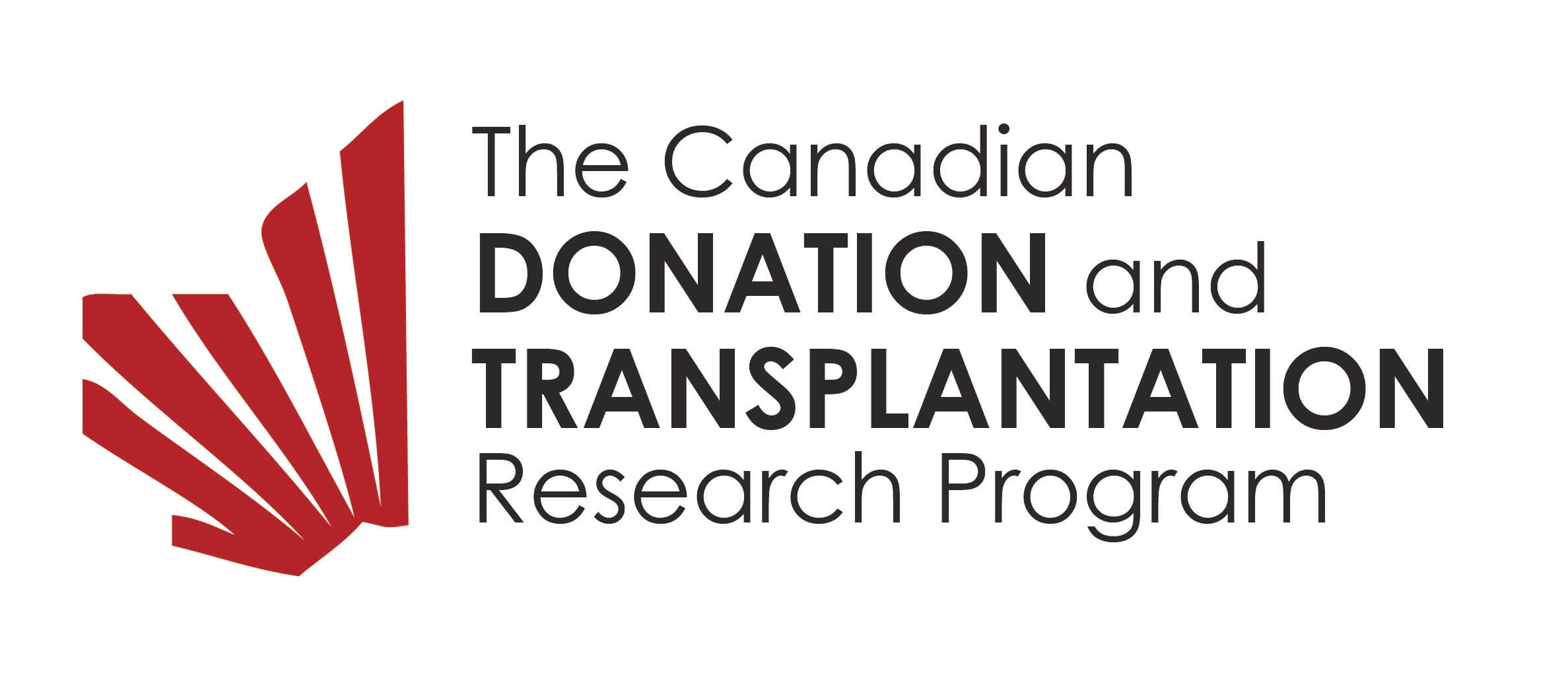
The liver is the 2nd most transplanted organ in Canada. With an increase in liver diseases such as fatty liver disease and liver cancer, and with an aging population of people who may have progressive chronic liver disease, the need for liver transplantation is on the rise in Canada.
The Canadian Liver Foundation applauds Canadians and their families who have chosen to offer the gift of life to others through organ donation, however, there are still too few donor organs available to offer to the hundreds of Canadians on the liver transplant waiting list. Sadly, this lack of available donor organs means that many Canadians will die while waiting for a much-needed liver transplant.
With such a critical shortage of organs, it is vital to ensure that every liver transplant has the best possible outcomes and research holds the key. To demonstrate our commitment to improving liver health through research and education, the CLF is proud to be a partner with the Canadian Institutes of Health Research (CIHR) in support of the Canadian Donation and Transplantation Research Program (CDTRP).
The objective of this program is to enhance the survival and quality of life of Canadians who undergo transplantation, through multi-disciplinary, collaborative and leading-edge research. Led by Dr. Lori West of the University of Alberta, the CDTRP connects more than 200 scientists, students, collaborators, patient partners and knowledge-users at 30 sites throughout Canada to carry out research and develop resources to increase access to transplantation and improve survival and quality of life of transplant patients.
The goals for this research on stem cell and solid organ transplant (including liver transplant) are to:
1. Increase the number of transplants
2. Extend the life of transplant patients
3. Improve the quality of life of transplant patients
4. Develop and enhance training for transplant specialists and researchers
5. Develop and coordinate a collaborative transplant network
6. Enhance transplantation data management systems
The CDTRP is supported through the CIHR with $11.25 million plus additional funding from six CIHR partners, including the CLF, of $2.6 million, for a total of $13.85 million. The CDTRP has raised an additional $9.5 million in support from academia, industry, and provincial organ procurement organizations, for a total of $23 million for this transplant research program.
This concentrated focus on improving transplantation through research is an incredible investment in the lives of Canadians who have diseases which have progressed to a point where a transplant may be the only hope for survival. On behalf of all Canadians with or at-risk of liver diseases which may one day progress to the need for a liver transplant, the CLF is honoured to be a partner and a supporter of this research program.
For more information on this program, please visit the CDTRP.
If you would like to make a donation to support CLF liver transplant research, please click here or contact Karen Seto by email or phone at 1 (800) 563-5483 (Extension 4939).

Established in March 2017 through a partnership between the University of Alberta, University of Calgary and University Health Network (affiliated with University of Toronto), the Canadian Network for Autoimmune Liver Disease (CaNAL) represents a major landmark in Canadian research for autoimmune liver disease.
To generate significant research impact for the benefit of the patient and develop maximum understanding of the disease, data from many patients is needed. Because autoimmune liver diseases are uncommon, nationwide collaboration across centres in Canada is essential.
CaNAL will enable several centres and patients to participate in research studies, and will help researchers effectively share and combine data to achieve the following objectives:
1. Develop a Canadian registry of Primary Biliary Cholangitis (PBC) and Autoimmune Hepatitis (AIH) patients.
2. Identify clinical endpoints of end stage liver disease.
3. Investigate the clinical variants of PBC.
4. Determine differences in gender/race/ethnicity and clustering of PBC and AIH in aboriginal populations.
5. Analyze biochemical markers and other factors indicative of early recurrence of PBC and AIH following liver transplantation.
Supported by the partners and by supporters including the Canadian Liver Foundation, CaNAL represents the first national registry of patients with autoimmune liver disease, and provides a powerful platform for much-needed research.

The Canadian Network on Hepatitis C (CanHepC) is a collaborative research network dedicated to research linking over 100 researchers, trainees, knowledge-users (community representatives, policy and decision makers) in the field of hepatitis C from across Canada and internationally.
The goal is to conduct innovative and interdisciplinary research, build research capacity, and translate evidence for uptake into practice and policy, to improve hepatitis C prevention and health outcomes of Canadians and contribute to the global effort to reduce hepatitis C burden worldwide, by focusing on the following themes:
PREVENTION – To improve strategies and interventions to reduce hepatitis C incidence and ultimately prevalence in the Canadian population.
TREATMENT – To enhance strategies to improve treatment access, uptake, adherence, and short and long-term outcomes.
OUTCOMES – To generate evidence-based data on health outcomes of people living with hepatitis C to guide decision making.
Another major goal of the CanHepC is enhanced training of the next generation of highly qualified personnel. CanHepC recruits and provides support and training to graduate, post-doctoral students and MDs who have demonstrated excellence early in their careers. The training program employs the knowledge and experience of mentors across Canada from multiple disciplines that have played a major role in recent advances in hepatitis C research and their ability to train excellent researchers.
For more information on this program, its mentor and participants, please visit the CanHepC website.
CanHepC is presenting the following webinar training sessions in 2019-2020.
To register, contact Norma Choucha at norma.choucha@canhepc.ca and for more information visit: www.canhepc.ca/en/webinars.
Nov 27th 2019
The role of bioinformatics in understanding HCV pathogenesis and implications for diagnosis and management of chronic liver disease
Speaker: Sonya MacParland, University of Toronto
Time: 15h00 ET
Dec 18th 2019
The role of biobanks and surveillance databases in guiding HCV elimination efforts
Speaker: Mel Krajden, University of British Columbia
Time: 15h00 ET
Jan 15th 2020
What is the impact of hepatitis C in first nations’ communities? Is treatment reaching these patients soon enough?
Speaker: Alexandra King, University of Saskatchewan
Time: 15h00 ET
Jan 29th 2020
Case studies and ethical issues in the treatment of hepatitis C
Speaker: Eve Roberts, Dalhousie University
Time: 15h00 ET
Feb 12th 2020
Experience of a residential school survivor. Reconciliation towards better future.
Speaker: Carrielynn Lund, CAAN
Time: 15h00 ET
Mar 25th 2020
The new Canadian approach to HIV and STBBI: The implications for young investigators from a funder perspective
Speaker: Geneviève Boily-Larouche, CIHR
Time: 15h00 ET

The Canadian Nuclear Isotope Council (CNIC) is an independent organization consisting of representatives from various levels within the Canadian health sector, nuclear industry and research bodies, convened specifically to advocate for Canada’s role in the production of the world’s isotope supply.
The CNIC serves as a voice in safeguarding the continued availability of isotopes, ensuring their public policies are risk-informed and science-based, and support the highest levels of public health and safety. Isotopes are critical in the health care sector, where they are used not only to diagnose and treat disease (including liver cancer), but also to sterilize medical supplies.
To learn more about isotopes, watch the following video available here.

Hepatology Research Fellowship
Fall 2018 Awardees
Presented By:
- CIHR Institute of Nutrition, Metabolism and Diabetes
In Partnership with:
- Canadian Association for the Study of the Liver
- Canadian Liver Foundation
Summary:
The CIHR Institute of Nutrition, Metabolism and Diabetes (INMD) in partnership with the Canadian Association for the Study of Liver (CASL) and the Canadian Liver Foundation (CLF), provided funding for the following awardees that were determined to be relevant to the research priority areas. The projects involve clinical and/or basic research that will advance the understanding of liver disease and will ultimately contribute to patient management and care in Canada.
Maryam Ebadi, Faculty of Medicine and Dentistry, University of Alberta
Project title: “Prognostic Value of a Prospective, Longitudinal Evaluation of Body Composition in Patients with Cirrhosis Evaluated for Liver Transplant”
Deeqa Mahamed, University Health Network
Project title: “Intrahepatic Immune Response to Discontinuation of Antiviral Therapy in Chronic Hepatitis B Patients”
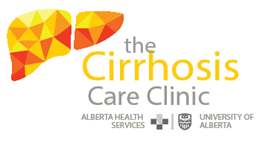
The Cirrhosis Care Clinic (CCC) at the University of Alberta Hospital provides care to individuals living with liver cirrhosis in Alberta, parts of British Columbia, Saskatchewan and the Territories. The focus of the multidisciplinary team of Hepatologists, Hepatology Nurse Practitioners and a Clinical Dietitian at the CCC is to improve medical care, research and support for individuals and families coping with liver cirrhosis.
![]()
The International Symposium on Hepatitis C Virus and Related Viruses has been a recurring annual conference since 1994. It has become the main forum for basic science investigators working on hepatitis C virus (HCV) and related viruses. Research into vaccine development, HCV pathogenesis and liver cancer following DAA treatment, novel diagnostics and sequencing approaches to track the evolution and transmission of HCV in at-risk populations are only some of the key remaining research questions.
The HCV2020 meeting will focus on the main objective of HCV elimination by bringing together Basic and Clinical investigators to discuss the remaining challenges in the HCV field and novel approaches to tackle them. The symposium will bring together keynote lectures from outstanding senior investigators and rising stars in virology, immunology and liver disease.
HepBeware
HepBeware is a free hepatitis B screening initiative that provides hepatitis B blood tests to those in Vancouver’s rapidly growing Asian and South Asian communities.
Hepatitis B’s burden is felt heavily by those of Asian and South Asian descent, where three-quarters of carriers are born. While an estimated 350,000 Canadians are affected by hepatitis B—there is no telling how many Asian-Canadians have been unknowingly living with this disease, and for how long.
Spearheaded by CLF-BC Board President Dr. Francis Ho, and GI specialist/hepatologist at the Vancouver General Hospital, Dr. Peter Kwan, HepBeware is the first of its kind in Canada. The project requires the cooperation of physicians, nurses and volunteers to help provide an immediate diagnosis to those unaware that they’ve been living with chronic hepatitis B.
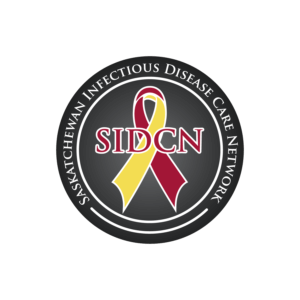
The SIDCN provides direct clinical services in the treatment of Hepatitis C as well as general internal medicine in Saskatoon’s core neighbourhood, as well as rural and/or reserve communities. The SIDCN also educates and supports health care practitioners to develop greater expertise in the management of Hepatitis C in order to help patients achieve better clinical outcomes and improvements in quality of life. The SIDCN has worked with, or is currently working with over 20 communities, delivering patient care as well as heath care professional training.
For more information about the SIDCN, click here.
 Calgary Liver Unit
Calgary Liver Unit
The Calgary Liver Unit is comprised of 10 hepatologists serving ~ 2-million people within Southern Alberta. Their work encompasses patient care, education, but also has advanced expertise in basic medical, epidemiological, health outcomes and clinical research. The Calgary Liver Unit oversees the largest number of clinical trials within the Cumming School of Medicine. Novel approaches are being developed and investigated within the Calgary Liver Unit to help them understand liver disease. These trials are focused on finding new cures for many different liver diseases including, autoimmune liver disease (primary biliary cirrhosis, primary sclerosing cholangitis), hepatitis B, liver cancer, alcoholic liver disease, and non-alcoholic fatty liver disease (NAFLD).
Recently, members of the Calgary Liver Unit are leading a National collaborative Network in Hepatitis C and Hepatitis B involving thousands of patients and major liver centres across Canada. The Canadian HBV Network is a collaborative organization of healthcare professionals and researchers from across Canada with an interest in advancing excellence in Hepatitis B patient care, research and education. To learn more about this collaboration, please visit canadianhbvnetwork.ca
